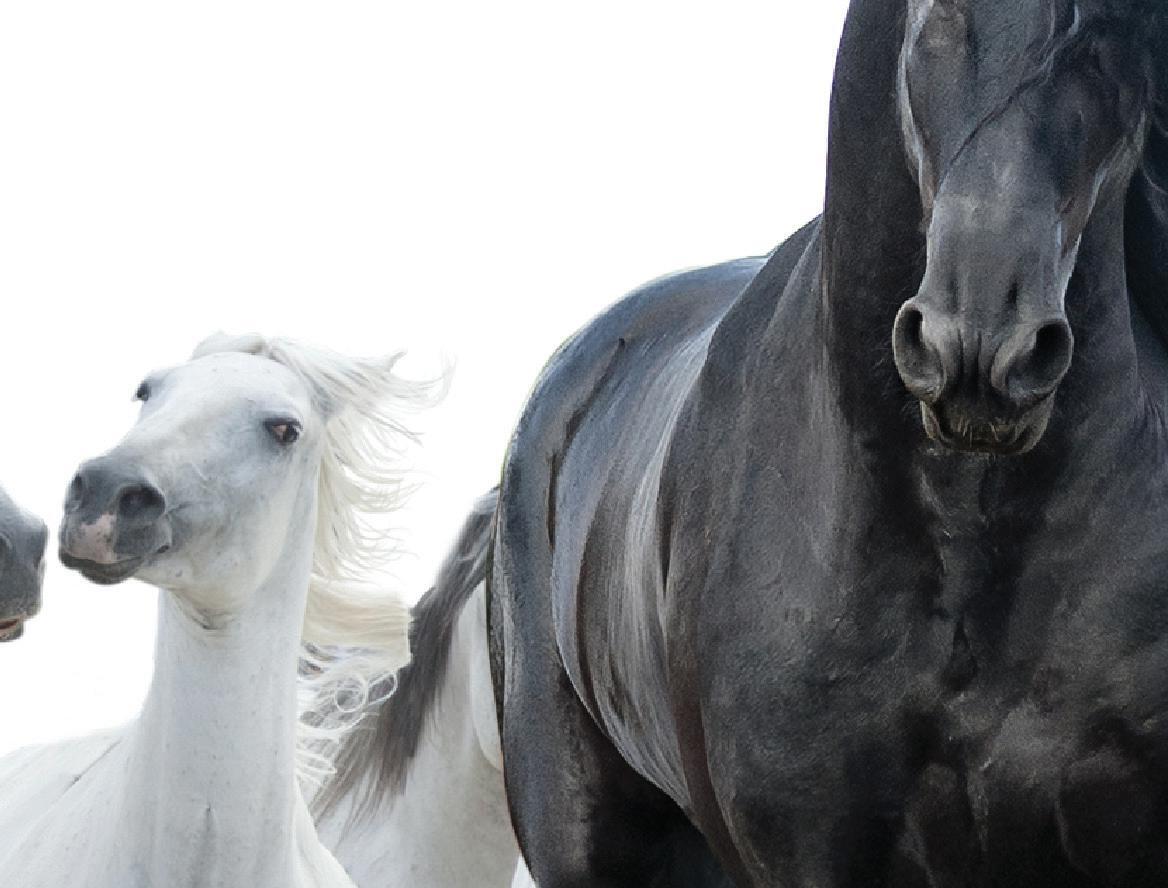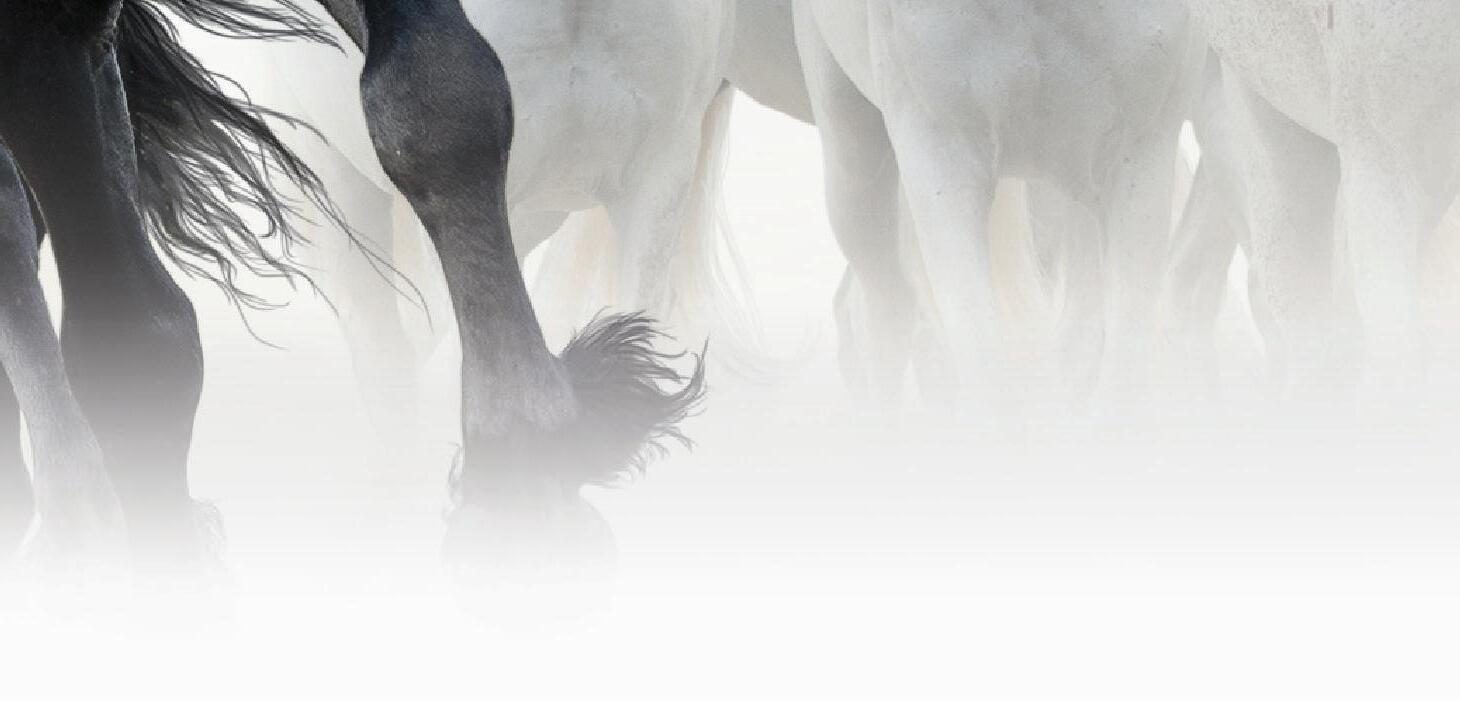

®







®




CVMA Spring Seminar in Yosemite

This event is sold out.
March 11–13, 2022
12 CEUs for veterinarians
Sponsored by
The Publication of the California Veterinary Medical Association

Publisher Dan Baxter
Managing Editor Kristen Calderon
Editor
Alternatives to Declaw
April 5, 2022 | 5:30 PM–6:45 PM (1.5 CEUs)
April 13, 2022 | 12:30 PM–1:45 PM (1.5 CEUs)
For more information, see page 48.
Taryn DeOilers
Publication Designer Howard Steffens
Classified Advertising Laura Phillips
Board of Governors
President
President-Elect
Member-at-Large
2022 Pacific Veterinary Conference in San Francisco


June 2–5, 2022
28.5 CEUs
For more information, see page 24.
SAVE THE DATE!
CVMA Fall Seminar in Palm Springs

September 30–October 2, 2022
12 CEUs for veterinarians

8 CEUs for technicians and CVMA CVAs
Registration opens soon. Watch your email for more information.
Registration for all CVMA events can be made online by logging onto cvma.net or by calling 800.655.2862.

CVMA-Affiliated Programs
Tell
California Veterinarian (ISSN 00081612) is published bi-monthly by the California Veterinary Medical Association, e-mail: staff@cvma.net. California Veterinarian is an official publication of the California Veterinary Medical Association. Annual subscription rates to non-members: $50 U.S., $60 Canada/Mexico, $70 overseas. Price per single copy: $10 current year, $12 back issues. Periodicals postage paid at Sacramento, CA and at additional mailing offices. POSTMASTER: Send address changes to California Veterinarian, 1400 River Park Dr., Suite 100, Sacramento, CA 95815-4505. Phone: 800.655.2862
The CVMA and California Veterinarian assume no responsibility for material contained in articles and advertisements published, nor does publication necessarily constitute endorsement by them. ©2022 CVMA
Want
Dr. Elisabeth Klapstein
Dr. Keith Rode
Dr. Michael Karle
Members Dr. Peter Bowie
Dr. Patrick Connolly
Dr. Larry Correia
Dr. Jennifer Hawkins
Dr. Adam Lauppe
Dr. Julia Lewis
Dr. Peter Mangold
Dr. Teresa Morishita
Dr. Peter Vogel
Dr. James White
Dr. Jodi Woods
Dr. Dirk Yelinek
Student Representatives
University of California, Davis
Western University
Treasurer
Alison Pankowski
Katelyn DeVore
Dr. George Bishop
Chair, House of Delegates Dr. Brent Wooden
CVMA Staff
Executive Director Dan Baxter
Assistant Executive Director Della Yee
Director of Communications
Director of Finance
Kristen Calderon
Kathy Van Booven
Director of Regulatory Affairs Dr. Grant Miller
Design and Marketing Manager




Howard Steffens
Laura Phillips Manager
Membership and Student Services
Publications Manager
Accountant
Taryn DeOilers
Bernice Evans
Communications and CE Coordinator Nicole Campos
Executive Assistant Patricia Lynn
Finance Coordinator
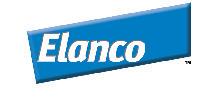



Sharmele Browne
Meetings and Events Coordinator Lily Briggs
Membership Coordinator Jennifer Smith
Receptionist Mary Young
Display Advertising
Please contact Taryn DeOilers at 916.649.0599 ext. 16 or email tdeoilers@cvma.net.
One of the challenges any professional association faces is remaining current and relevant to its members. Relevance can be found in various ways, from an association’s ability to effectively promote membership interests, to its capacity to deliver services and resources that membership wants, to its ability to keep its members informed and educated.








We at the CVMA offi ce are proud of our recent accomplishments in regards to both veterinary advocacy and member services. On the advocacy front, we worked to ensure that veterinarians were heard relative to new laws at the Veterinary Medical Board and at the Board of Pharmacy. We also closely participated in the development and refi nement of new laws pertaining to animal blood banking, as well as the permanent funding of an animal disaster response program at UC Davis.
On the member benefi ts/services side, we have recently rolled out two new member discount programs—one through Epicur Pharma on compounded medications for in-house use and dispensation, and one through The Castle Press for security and regular prescription pads, stationery, nametags, and more. We are also pleased to report that our Member Assistance Plan through LifeWorks (the subject of my column in the January/February issue of California Veterinarian) has seen a successful launch, and that in the wake of our recently conducted member benefi ts survey, we are working to develop even more benefi ts that will help you and your practice. Meanwhile, all through the COVID-19 pandemic, we have continued to provide the same high-caliber CE off erings as always, albeit in a mostly virtual format.
And speaking of CE, I want to take a moment to highlight our forthcoming Pacific Veterinary Conference (PacVet) in San Francisco on June 2 through 5. After two years of purely virtual conferences (rebranded as PacVet Live!), we are this time offering the best of both worlds through a hybrid program that will welcome our in-person attendees at the beautiful (and recently renovated) Hilton San Francisco Union Square, as well as those who prefer to attend remotely. In addition to an extensive CE program featuring speakers from all across the country addressing clinical, practice management, and other disciplines, in-person attendees will have the opportunity to participate in hands-on labs and sponsored symposia. Also on tap is our two-day Vet Expo, which allows attendees to learn about the latest products and services that the industry has to offer, as well as dedicated receptions for UC Davis and WesternU veterinary alumni, the CVMA Awards and Installation of Offi cers ceremony, and the President’s Reception. And, of course, PacVet provides the all-important opportunity to connect (and re-connect) with your colleagues in your professional community in one of the most beautiful cities in the country. Virtual attendees will be able to experience live streaming of sessions from our Small Animal Medicine and Technician tracks, and—just like in-person attendees—have the ability to pose questions in real time to our speakers.

























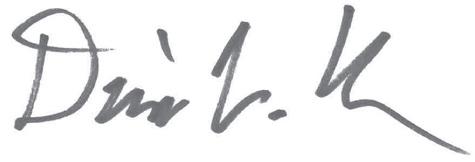
Especially in the wake of our successful Fall Seminar this past October in Lake Tahoe, which also featured both in-person and virtual options, we at the CVMA can’t wait to get back to holding PacVet as it was meant to be held! For more information on PacVet 2022, see page 24 of this issue, or visit PacVet.net.
Dan Baxter, Executive Director
“You mean to tell me that I’ve spent two grand on Chihuahuas…Chihuahuas…and you still can’t tell me what’s wrong with my dogs?”
“Sir, I understand your frustration. Vomiting and diarrhea are very non-specific signs. Bloodwork, radiographs, and fecal tests are screening tools to specify our next course of action. Based on these results, your pets most likely have pancreatitis. I am suggesting an abdominal ultrasound if you feel your pets have not been improving at home with supportive care.”
Before I could tell him how serious pancreatitis can be, he cut me off, implied that I was completely incompetent, and hung up.
His condescending remarks infuriated me. But once my anger subsided, I was left second-guessing myself. Did I make the right call for diagnostics? Was I right to say that abdominal ultrasound was the next, best, gold-standard step? I was unsettled for the rest of the day, and that night I couldn’t sleep. I kept tossing and turning, wondering if I’d done something wrong.
Then my attention was directed towards another case that I often revisit during sleepless nights: a dog with a sizeable mast cell tumor that I was confident I could remove with appropriate margins.
I resected the mass with 2-cm margins, one fascial plane deep. While I had anticipated a large closure, I severely underestimated just how difficult it would be. I tried apposing the skin with walking sutures to no avail, removed them, and unsuccessfully attempted two sliding skin grafts on either side of the primary wound to relieve tension. Our hospital surgeon and her team took over the surgery despite their fully booked schedule, as the patient had been under anesthesia for quite some time.
I left the OR to update the owner on the current situation and discussed open wound management due to the incisions made for the sliding skin grafts. We concluded the phone call, and I made my way to the bathroom to shed a few tears. I’d stayed level-headed all this time but needed a moment to release the anguish I felt. It was clear I had overestimated my surgical abilities.
When I returned to watch the rest of the surgery through the OR window, the team had finished; however, the patient had significantly labored breathing. Convinced the patient was agonal, I ran out of the treatment area, into the hallway, and collapsed in a crying heap on the floor. Not only would this patient have an extensive recovery, but its life may also have been compromised by the duration of the surgery.
I am grateful to report that the patient did recover from anesthesia and is now completely healed, but coming back from a case like this has not been easy.

In the weeks following this case, I could hardly trust myself with anything other than a wellness exam. I found it difficult coming into work to face my colleagues. I hated myself for my unsuccessful surgery, and I felt others should feel the same. To my surprise, day in and day out, they urged me to forgive myself, and assured me that as hard as it is, mistakes are part of the learning process.
Moving forward is still a work in progress. Even now, confidence restored, on a bad day a conversation with a disgruntled client can be enough to throw me back into the spiral of mulling this case over. Receiving the immense support from my hospital and loved ones and reflecting on stories shared by other doctors and nurses regarding their own similar experiences has helped me feel less alone.
I was very reluctant to share this story, but out of all the successful cases I’ve managed, it’s this challenging one that stands out to me the most. In a field as difficult as ours, I hope we all find space for self-forgiveness. Every case is an opportunity to learn something.
The CVMA Board of Governors approved the amendment of the CVMA’s Constitution and Bylaws at its meeting on January 23. To comply with the CVMA’s governance requirements, the amended versions of the Constitution and Bylaws must be published for member review prior to final adoption. To read the amended Constitution and Bylaws, visit cvma.net and click on the About CVMA tab > Bylaws & Constitution.

At its January 23 meeting, the CVMA Board of Governors also reviewed, discussed, and adopted the CVMA’s new Code of Ethics, now labeled as its Principles of Veterinary Medical Ethics. More streamlined than the previous Code of Ethics, this new list of principles reflects the CVMA’s intent to review and improve its governing documents. To read the CVMA’s new Principles of Veterinary Medical Ethics, visit cvma.net and click on the Resources tab > CVMA Policies > CVMA Ethical Policies > CVMA Principles of Veterinary Medical Ethics.
The deadline to submit applications for the California Veterinary Medical Foundation/Veterinary Insurance Services Company (CVMF/VISC) and the CVMF Ron Faoro, DVM, Student Scholarship Awards is April 15. UC Davis and WesternU veterinary students who are in good standing are eligible for the awards and are encouraged to apply. For more information and to apply, visit cvmf.net. Completed application forms should be emailed to staff@cvmf.net
The CVMA offers the Relief Veterinarian Directory as a member benefit to help connect veterinarians looking for relief help with locum tenens veterinarians. If you are a CVMA member relief veterinarian, we want to include your information in our updated database. To join the directory, please contact Jennifer Smith at jsmith@cvma.net or call 800.655.2862, ext. 35.
Special member pricing on CE offered in-person and online to fit your needs. Visit the Learning tab at cvma.net.

Manage your continuing education records through the CVMA website. Visit the Learning tab at cvma.net.
The CVMA Certified Veterinary Assistant Program increases your veterinary assistants’ education, experience, and skills. Visit the Careers tab at cvma.net.
Free legal consultation for member veterinarians. Take advantage of 30 minutes of free legal consultation each month. Visit the Membership tab at cvma.net.
One-stop regulatory consulting resources for member veterinarians to help you stay in compliance with ever-changing laws and regulations. Visit the Membership tab at cvma.net.
The CVMA InLine Program assists with workplace safety, legal issues, and laws and regulations affecting the profession. Visit cvma-inline.net.
The Relief Veterinarian Directory provides contact information for locum tenens veterinarians. Visit the Resources tab on cvma.net.
The Find-a-Veterinarian online listing allows potential clients to find you by name, city, and practice type. Visit the Resources tab on cvma.net.
Ensuring that your voice is heard at the State Capitol through professional advocacy. Visit the CVMA Legislative Action Center at cvma.net under the Government tab.
Protecting your license by continually monitoring and reporting unlicensed veterinary activity in all areas of practice.
Immediate access to critical information through the California Veterinarian magazine, the CVMA Weekly e-newsletter, the CVMA website, press releases, and action alerts.
The CVMA App allows access to instant legislative updates, CE offerings, regulatory information, and more—all in the palm of your hand.
NEW! LifeWorks is a full-service member assistance program (MAP) providing confidential consultations, information and resources, connections to community agencies and supports, and referrals to counseling (by video or in-person). CVMA members and their families have access to the program 24/7 via phone, online, and the free mobile app—all at no additional cost. Additional wellness resources can be found under the Resources tab at cvma.net.
Veterinary Insurance Services Company (VISC) provides personal and professional lines of coverage tailored for the needs of veterinary professionals. Learn more at visc-ins.com.
Delta Dental insurance plans to cover your personal and staff needs.
Vision Service Plan (VSP) provides affordable, high-quality eye care plans.
The CVMA Career Center allows you to post and view classified employment ads and practice sales ads. Visit the Resources tab at cvma.net.
Network with colleagues and specialist s through our membersonly online CVMA Directory. Visit the Resources tab at cvma.net.
The Summer Work Experience Program (SWEP) connects students from UC Davis and WesternU with veterinary practices for summer employment.
VISC offers UC Davis and WesternU student members complimentary professional liability insurance.
CareCredit helps families manage veterinary costs through monthly payments.
NEW! The Castle Press offers discounts on printing services and products, including controlled substance security prescription pads, name tags, stationery, and more.
NEW! Epicur Pharma offers discounts on its 503B product line for in-house use and administration as well as secondary dispensation to clients.
GlobalVetLINK offers discount pricing for electronic prescriptions, health certificates, feed directives, and other products to help practices manage records.
HireRight provides discounted employee background screening.



Infintech lowers your credit card processing rates.
Staples Advantage gives deep discounts to members on office items.
California Academy of Sciences provides a discount to the planetarium, aquarium, and natural history museum.

Car rental savings through Alamo, Avis, and National.
TicketsAtWork provides discounts for theme parks, including Disneyland, Disney World, Universal Studios, Great America, Sea World, Six Flags, and more.
Members are the heart of the CVMA
Jenny Wu, DVM Partner at Family Pet Hospital
Practice type: Small animal general practice
St. George’s University
My role model is animal behaviorist and author Dr. Sophia Yin.
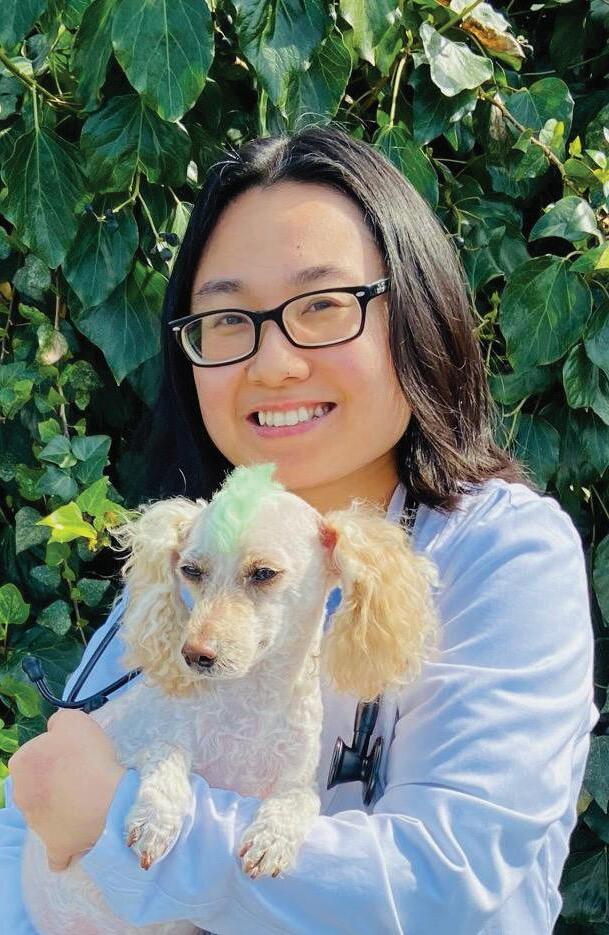
If I weren’t in the veterinary profession, I would be a food and travel blogger/influencer.
An area of veterinary medicine that I would like to explore is behavior and integrative medicine.
The most adventurous thing I’ve done is scuba diving in the Caribbean and ziplining upside-down in Nicaragua.
I keep my workplace fun by lightening the mood with jokes and playing music.
What is your life philosophy?
Be persistent, and always try your best no matter what.
I am a CVMA member because I like to be involved and advocate for the veterinary profession at the state and local levels.
This year, California legislators introduced over 2,100 bills by the February 18, 2022 submission deadline. CVMA’s lobbyists Christina DiCaro and Mike Dillon reviewed every bill to determine which should move forward to the CVMA legislative team. The legislative team—which includes CVMA lobbyists, key staff, the Executive Committee, and Legislative Committee co-chairs Dr. Dayna Wiedenkeller and Dr. Brent Wooden—closely monitors all bills and represents the CVMA in meetings with legislative staff and bill sponsors. On February 23, the legislative team discussed nearly 25 such bills to assess their impact on veterinary medicine, animal health and welfare, and employer/ employee relations. Ultimately, the legislative team referred 22 bills for review by the CVMA Legislative Committee. The CVMA Legislative Committee met on March 4, discussed each bill, and recommended positions to the CVMA Board of Governors. The Board will vote on official CVMA positions at their April 2 meeting.

The CVMA Board of Governors took early positions on the following bills due to their immediate importance:

CVMA Position: Oppose
This bill would restrict veterinarians from performing a declaw procedure on all cats unless it is being performed for a therapeutic purpose. The bill would impose a civil penalty that increases for each violation. While not expressly written in this law, it would also subject veterinarians to regulatory enforcement by the Veterinary Medical Board, as it would create a legal prohibition of a veterinary medical procedure.
The CVMA successfully defeated similar legislation in past years based on the premise that the decision to perform a treatment or therapy should be made on a case-by-case basis between the veterinarian and the client. While the bill contains an exception for declawing procedures performed for a therapeutic purpose, the bill does not address owners who are elderly, disabled, or immunocompromised and who may not be able to own or keep their cats or other animals due to this legislation. This bill overrides the process of establishing minimum standards of practice that are regulated by the California Veterinary Medical Board and the process that governs a veterinarian’s right to practice.
CVMA Position: Oppose, Unless Amended
This bill would enact the Dog and Cat Bill of Rights and would require every public animal control agency or shelter, SPCA shelter, humane society shelter, or rescue group to post a copy of the Dog and Cat Bill of Rights. The bill would impose a civil penalty for failure to post the Dog and Cat Bill of Rights, as specified. The bill would make legislative findings and declarations in support of the Dog and Cat Bill of Rights.
While the bill appears to be aimed towards municipal animal services agencies, specific language in the bill could be interpreted as applying to kennel facilities within veterinary practices. In addition, the bill uses the term “guardian” in reference to animal owners, a word that the CVMA has for many years opposed in state law, as it has unanticipated and potentially damaging legal consequences for non-economic, damage-based litigation.
AB 1885 (Kalra) Cannabis and cannabis products: animals: veterinary medicine

CVMA Position: Support

Current law permits veterinarians to discuss the use of medicinal cannabis for animal patients with clients but prohibits cannabis recommendation. Over the past two years, an unsuccessful attempt was made in the form of AB 384 (Kalra) and SB 627 (Galgiani) to permit veterinarians to recommend cannabis. This year, Assemblymember Ash Kalra has re-introduced legislation to permit cannabis recommendation.
Mr. Kalra is experienced in this subject, as he previously carried the legislation that allowed veterinarians to discuss cannabis. The CVMA will work closely with Mr. Kalra and his staff to represent the veterinary profession on this issue.
AB 2764 (Nazarian /Lee) Animals: commercial animal feeding operations and slaughterhouses
CVMA Position: Oppose
This bill would prohibit the development or expansion of commercial animal feeding operations and slaughterhouses in California, including the addition of new businesses. This includes feedlots, broiler farms, aquatic farms, and other commercial agriculture production operations that sell animal-based products or byproducts.

January 3 Legislature reconvenes



January 10 Deadline for Governor to submit budget
February 18 Last day for bills to be introduced
May 27 Last day for bills to pass out of house of origin
July 1 Last day for policy committees to meet and hear bills
August 25 Last day to amend bills on the Floor (general session)



August 31 Last day for each house to pass bills
September 30 Last day for Governor to sign or veto legislation
For specific information on bills or to track CVMA-monitored bills through the legislative process, visit the CVMA’s online Legislative Action Center, which now has a new look and format. The Voter Voice platform makes searching for relevant legislation easier and is now more user-friendly. Check out the improved format by logging onto cvma. net and clicking on the Government tab.
Cultivating diversity, equity, and inclusion is essential to ensuring the health and welfare of the veterinary profession and those working within it. This is the second article in our Unity series, in which we aim to provide a current snapshot of the professional landscape, illustrate why a diverse and inclusive environment is critical for professional and personal wellness, and discuss how we can all work together to bring about needed and positive change.
While it is true that the United States is becoming increasingly diverse, it is important to note that diversity, equity, and inclusion (DEI) practices do not evolve organically within any population shift. This most likely holds true for veterinary medicine, which is considered to be one of the least diverse professions in the country. Eff orts to create more diverse, inclusive, and equitable work environments require intention and refl ection. In addition, advocates fear that well-intended DEI eff orts too often become mere platitudes, or the responsibility gets delegated to a diversity leader (usually a person of color), when in fact, it is everyone’s responsibility to encourage and cultivate DEI practices—particularly those from advantaged populations.
The good news is that many in the veterinary profession, including prominent leaders, are committed and willing to do the work needed to effect change. But what does DEI look like in practice? And how do we prevent DEI from becoming a ubiquitous catchphrase that can hinder real progress? Let’s start by deconstructing this acronym— “DEI”—in order to define and differentiate the terminology. Along the way, let’s consider some pertinent questions and actions that can ensure that one of the noblest of professions is also one that prides itself on its relevance and accessibility.
Diversity: the quality or state of having many diff erent forms, types, ideas, etc. –

 Merriam-Webster Dictionary
Merriam-Webster Dictionary
Traditionally, discussions about diversity tended to focus primarily on race, especially in the veterinary profession. This is not surprising, considering that the veterinary profession has been referred to as one of the “whitest” professions in the nation. However, we understand that diversity, in reference to populations of people, refers to a vast range of categories including, but not limited to, gender identity, sexual orientation, religion, socioeconomic status, mental and physical ability, and education. In fact, recent defi nitions of diversity have become quite lengthy as we continue to recognize and acknowledge the abundance of diff erences among individuals. The need to diversify the veterinary profession has long been identifi ed as a critical goal. While leaders in veterinary education and organizations like the American Association of Veterinary Medical Colleges (AAVMC) have been working to diversify the veterinary student body, there are actions that can be taken by those currently in the veterinary workforce. Similar to the recruitment of veterinary students, eff orts to recruit employees should also be considered with the goal of diversity in mind. Some questions that you might ask include: Where are your job listings posted? Are diverse populations being considered when participating in job fairs or
recruitment events? How diverse is the clientele that you are serving? Are the qualifications for the positions you offer in fact limiting the scope of talent you seek? Are you connecting with the growing number of DEIrelated affinity groups in veterinary medicine in order to recruit new team members?
Inclusion: the state of being included—to take in or comprise as a part of a whole or group – MerriamWebster Dictionary
It is in our human nature to want to feel that we belong and that we are valued by others. However, diversity and inclusion do not necessarily go handin-hand. This has been recognized in veterinary education, where conventional efforts have been geared toward recruitment and admissions, but are now including an equally critical focus on campus climate. It is one thing to have a diverse group of people that make up an organization, and it is another to ensure that everyone feels welcomed and part of the team. In fact, if diverse teams are created without attention to each individual’s sense of agency and belonging within that team—the “inclusion” piece— those who are not included may feel more alienated than if they were excluded from the team altogether.
Inclusion can be a challenge for a monolithic profession, where many minority populations feel underrepresented. Representation is important and can be an inspiration for those who might otherwise choose a different career path. However, even with a dearth of role models, there are still ways to create inclusive workplaces that are supportive of everyone. Make sure to actively seek feedback from members of your team, and consider developing a DEI statement for your workplace and publishing it on your website and in your marketing materials. Create DEI policies
and pronounce them to potential new employees. Creating a culture with an authentic commitment to DEI will resonate not just with employees, but with your clients as well.
Political, social, and economic equity is about justice and fairness. Equity differs from equality in that it recognizes that certain groups of people have historically been underserved and underrepresented, and that in order to achieve true equality, systems that have contributed to these inequities need to be disrupted and recalibrated. Societal inequities can be reflected in our institutions and workplaces. When examining your workplace for equitable practices, ask yourself: Does the leadership/management reflect the diversity within our organization? Whose voices are heard when discussing practice management decisions? Is everyone supported and encouraged to succeed? Does everyone have access to the same rewards? Can we claim gender pay equity? Achieving equity goes beyond inclusiveness in that it addresses systems and mechanisms that can result in disparate or unfair outcomes.
Imagining the time and effort needed to make considerable changes in the veterinary profession with respect to DEI can be daunting. Change takes time, but with persistent commitment and effort by all who are invested, it will come sooner. We cannot rely on inclusivity and equity emerging from diversity alone, nor can we rely on these three organizational attainments to always exist concurrently. Only when we deliberately address each aspect of DEI will we create change that is sustainable and necessary for the future of veterinary medicine.
SuzieSuzie Kovacs graduated from the University of Guelph’s Ontario Veterinary College with a Master of Science in Epidemiology, after which she moved to California and took a faculty position at Western University’s College of Veterinary Medicine. Suzie received a Ph.D. in Higher Education from Claremont Graduate University for work focused on diversity, equity, and inclusion within the veterinary profession. In 2015, she was a charter recipient of the Broad Spectrum Veterinary Student Association LGBTQ+ Awareness Award, a national award that recognizes those who support and confirm inclusivity in veterinary academia, regardless of sexual orientation, gender identity, or gender expression.
The above article is part of the CVMA’s “Unity” series focusing on diversity and inclusion within veterinary medicine, particularly with respect to historically underrepresented groups. Do you have any ways that you have fostered inclusion in your workplace or the veterinary community at large? Do you have any success stories or pieces of advice to share? If so, email the CVMA at tdeoilers@cvma.net, and we may publish your feedback (with your permission, of course) in a future issue of California Veterinarian!

Your office has hired a new employee who recently migrated to the U.S. from Singapore. Although she seems nice, you notice she never directly looks at you when speaking and avoids eye contact with others in the office. At first, you find this unsettling and wonder if she has something to hide or is even ignoring you. After mentioning it to a friend who has traveled to Singapore, however, you learn that direct eye contact can be considered aggressive or rude in that culture.
This is one of many examples of misunderstandings that can occur unintentionally at work due to cultural differences. Since workplaces are more culturally diverse than ever before, the approach you take in relating to others may require some extra effort.
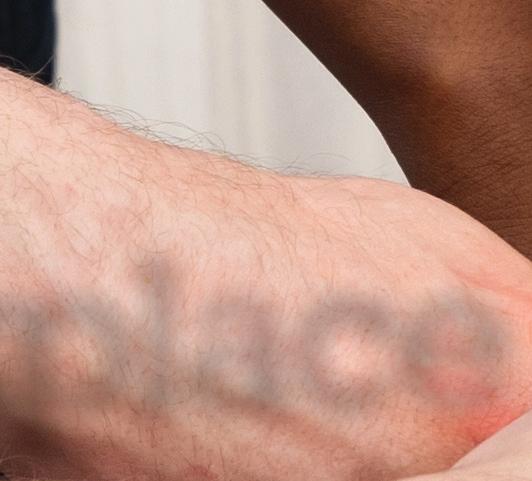

How to make the most of your culturally diverse workplace.
Below are ways to help everyone avoid misunderstandings and work more harmoniously at work.
Become an international “student.” Taking the time to learn about coworkers’ cultural norms can benefit everyone. When done in a respectful manner, showing interest in another person’s culture can break down barriers and help you understand behaviors that are unusual to you. For example, knowing that asking open-ended questions
rather than those requiring yes-or-no responses is more favorable since, in some cultures, people consider it rude or find it embarrassing to say “no.” Understanding this will help you receive the feedback you need from your team.
Find a common connection. There are topics that are considered taboo when talking with colleagues, especially when you are just getting to know them. To be respectful of someone’s personal beliefs, avoid talking about religion, politics, or salaries when you are getting to know them. Stick to universal subjects like food, family, or sports.
Imagining your roles are reversed. Take the time to put yourself in your coworkers’ shoes, especially if language barriers or differing viewpoints become frustrating. Consider what the experience might be like for the other person.
Communicating with someone who has adopted your first language as their second language may sometimes seem time-consuming or challenging. But imagine yourself not only trying to communicate, but to work and succeed in a country where your native language isn’t widely spoken. Be aware of making cultural references, using slang, or telling jokes that not everyone will understand, and take the time to make sure you and coworkers are on the same page.

Make yourself available if a colleague needs further clarification, as some people may be too shy to ask questions. Becoming aware of the obstacles new immigrants face in the workplace is a good way to connect, provide reassurance, and avoid misunderstandings.
Leading toward a new understanding. As a manager or people leader, you can also ensure your employees embrace cultural diversity by setting an example. Build an inclusive workplace by:
{ Acknowledging cultural differences. Recognize cultural holidays and practices and try to develop an understanding of religious observances.
{ Easing “all work, no play.” Have potluck lunches once a month or host informal team socials in person or by video chat to unite your staff. These events allow people who wouldn’t normally spend time together to get to know everyone and appreciate them on a personal level.
{ Creating a diversity committee. Designate a group to specifically deal with personal culture, communication, and inclusion issues in the workplace, and also act as a resource for new employees who are recent immigrants or expats.
{ Understand the positive affect of an inclusive workplace. Research confirms that discrimination is a contributing factor to mental health disorders. Work toward creating an inclusive workplace to improve your team’s mental health.

With the spread of globalization, a rise in the growth rate of expat assignments, and an overall increase in immigration, the workplace is more culturally rich than ever before. While this may sometimes present challenges, understanding and respecting diversity can help you, your colleagues, and your workplace to thrive.
This article is courtesy of LifeWorks, a member assistance program (MAP) available to CVMA members offering confidential counseling and coaching services, health and wellness assessments, and self-guided resources and toolkits. You can find this and many other articles and videos on a variety of wellness-related topics, including relationships, mental and physical health, money, work, and more on the LifeWorks website and mobile app. If you are a CVMA member and have not received the invitation to join LifeWorks, contact jsmith@cvma.net or call us at 800.655.2862. If you are not yet a CVMA member and would like to take advantage of this and many other valuable CVMA member benefits, visit the Membership tab at cvma.net to join.

The CVMA’s Legal Services Program assists members with workplace safety, legal issues, and laws and regulations that affect veterinary professionals. Here are questions and responses that are representative of those asked and answered through the CVMA’s program:
An employee handbook is not legally required. As businesses grow, however, they may develop myriad policies that are best collected and maintained in a single “handbook.” As a rule of thumb, a handbook is appropriate when there are twenty or so employees. A handbook that is followed by the employer and the employees can promote consistency of expectations and treatment, thereby limiting confusion and mitigating claims that the employer acted arbitrarily, unfairly, or in a discriminatory manner. Employee handbooks may be an appropriate place for the employer’s discrimination, harassment, retaliation, and other mandated policies, and can provide employees clear grievance processes. Further, they may be valuable in establishing the “at will” nature of the employment relationship.
Do note that courts have interpreted policies maintained in an employee handbook to be a contract between the employer and the employee. Thus, an employee handbook should not be hastily prepared for the mere sake of having one in place. Instead, an employee handbook should be thoughtfully drafted and should accurately incorporate the policies of the employer. Further, once published, the handbook must be regularly reviewed and updated, on at least a yearly basis.
I am selling my practice. The buyer will be assuming the long-term lease. Does the landlord have to consent to the assignment of the lease? Will I have ongoing obligations under the lease?
The sale of a practice often includes the transfer of the premises where the practice is located. When the selling
party leases the premises, this transfer is accomplished by an assignment of the lease to the buyer. Most leases provide that the landlord must approve the assignment. This approval right is also generally triggered when there is a sale of the ownership of a corporation that is a tenant. The landlord must act reasonably in approving or disapproving the assignment. The lease may contain financial standards, however, that the party assuming the lease must meet to be approved. Under most circumstances, the landlord is entitled to assure itself that the party assuming the lease will have the ability to fulfill the tenant’s obligations under the lease.
Generally, the seller’s assignment of the lease to the buyer, even with the landlord’s approval, does not exonerate the seller’s obligations under the lease. Thus, if the buyer defaults on the lease, the landlord can look to the seller, as the initial tenant on the lease, to pay the rent and fulfill other obligations under the lease. For that reason, it is very important that the selling party carefully review the length of the lease and determine whether there are any options embedded within the lease that may further extend the seller’s liability. To avoid the risk of post-assignment liability, the seller may seek to negotiate with the landlord to be released from the lease obligations upon assignment, or require that the buyer enter into a new lease with the landlord that terminates the seller’s obligations under the existing lease.
Location is often a valuable part of a practice and a key component of a practice sale. Whether the practice location is transferred to the buyer by a sale of the property or an assignment of the lease, both buyer and seller should engage qualified legal assistance to assess their respective risks for a successful practice transfer.
Mr. Marmaduke has been an attorney with Wilke Fleury for over 30 years and has been practicing law in California for over 40 years. One of his primary focuses is the representation of physicians and medical groups in matters ranging from corporate structure, mergers and acquisitions, joint ventures, business transactions, regulatory issues, and professional employment.
Mr. Marmaduke is part of the CVMA’s Legal Services Program, a program designed to assist CVMA member veterinarians with workplace safety, legal issues, and laws and regulations that affect the veterinary profession.
Mr. Marmaduke has been a partner with Wilke Fleury for 30 years and has been practicing law in California for over 40 years. One of his primary focuses is the representation of physicians and medical groups in matters ranging from corporate structure, mergers and acquisitions, joint ventures, business transactions, regulatory issues, and professional employment.
Mr. Marmaduke is part of the CVMA’s Legal Services Program, a program designed to assist CVMA member veterinarians with workplace safety, legal issues, and laws and regulations that affect the veterinary profession.

The CVMA Certified Veterinary Assistant Program provides basic training and skills in a variety of areas through online education and in-hospital practical experience. Now, veterinary practices and participating educational institutions can advance their CVMA Certified Veterinary Assistants’ knowledge even further with training in the CVMA CVA Level II program. Certification in both Level I and, now, Level II increases the participant’s value as a member of the veterinary practice team and better prepares them to become registered veterinary technicians if they choose.
CVMA CVAs will complete three components in this advanced program: online education (videos), evaluation (skills assessments task list), and a written examination (passing score of 80% required).
Mentors will evaluate the applicant’s ability to accomplish 130 skills from these areas of the task list:
Communication with Clients
Behavior
Recognizing Diseases/Symptoms
Anatomy
Cytology/Laboratory
Fluid Therapy and Medications
Wound Care/Triage/Emergency
Dentistry
Exotics
Auxiliary Skills
Applicants for CVMA CVA Level II must have first completed Level I certification.
Program Fees
The CVMA CVA program is affordable and efficient. The low-cost annual subscription fee allows the entire practice access to the CVMA CVA Level I and Level II curricula, as well as the complete Animal Care Technologies training library. CVMA members get a $50 discount for the annual subscription. Each staff member can learn at their own pace, and there is no long-term commitment.
Participants with a current subscription to the Level I program who wish to continue on to the Level II program will still pay the same annual subscription fee and pay for the additional certification credit prior to taking the final exam. There are no additional sign-up fees as long as there is no break between the subscription levels.
Certification credits are prepaid before each applicant for the CVMA CVA Level I or Level II program takes their final exam. The test fees are currently $169 for CVMA members and $203 for non-members. (Practices must have at least one CVMA member veterinarian to receive the member discount.)
For full information and to register for the CVMA CVA program, visit the Careers tab at cvma.net and click on the sign-up link. If you have additional questions, contact Laura Phillips at lphillips@cvma.net or 800.655.2862.
• We have valued over 315 veterinary practices and clinics

• We have the tax expertise you need when buying or selling
• We are Accredited in Business Valuations, a certification that only CPAs can hold
• We are an independent adviser with no financial stake in the transaction
We are experts in all aspects of:
• Buying and selling a veterinary practice or clinic
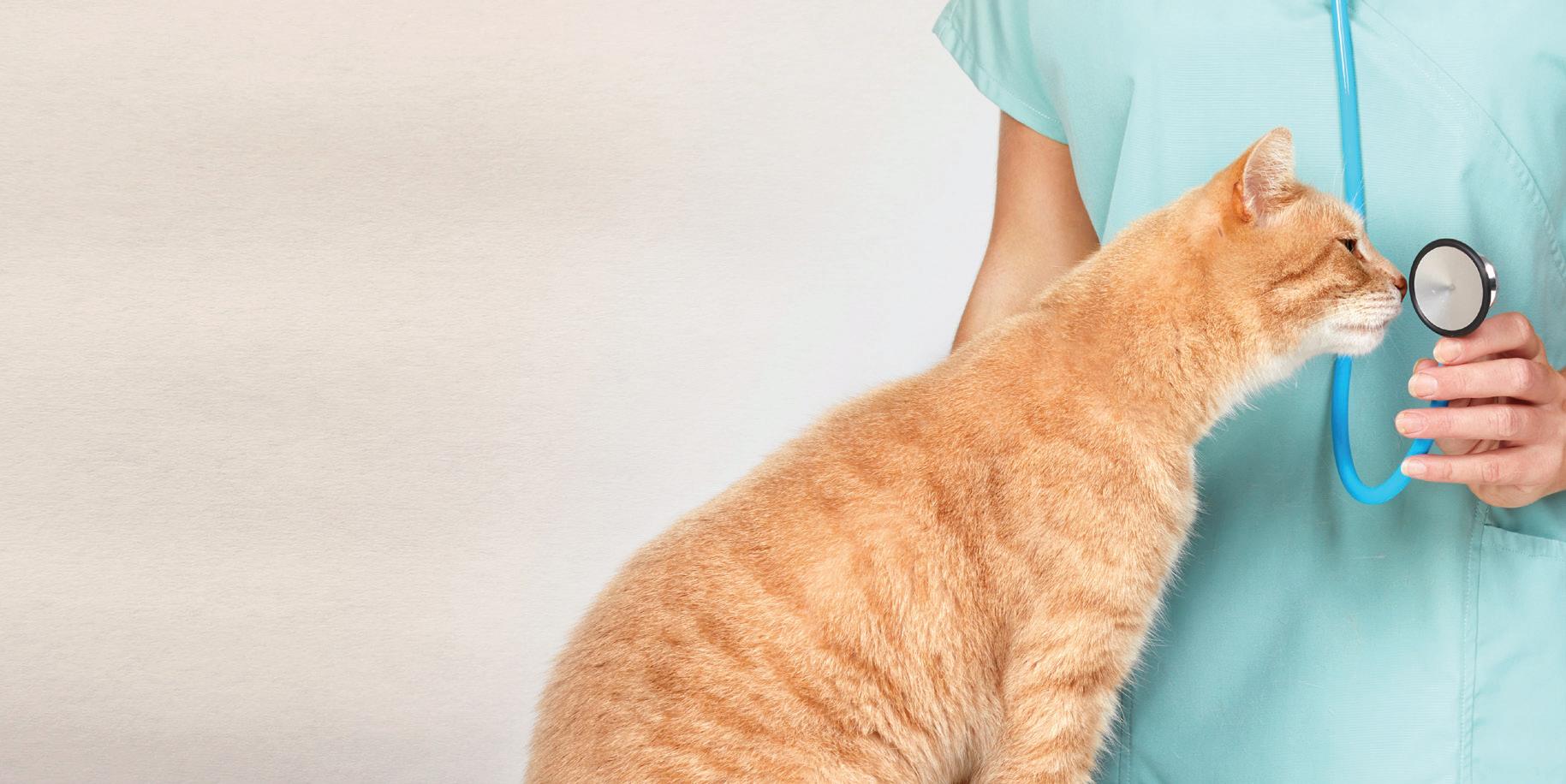
• Facilitating associate buy-ins
• Preparing an exit strategy
• Creating an estate plan
• Increasing the value of your practice
To maximize value and minimize taxes, contact:
Lou Gatto, CPA lou@gattomcferson.com
Tom McFerson, CPA, ABV tom@gattomcferson.com
The CVMA would like to thank its members who support the CVMA Political Action Committee (CVMA-PAC) through their generous donations.
What does the CVMA-PAC do?
The CVMA is your voice at the State Capitol. The CVMA-PAC helps us cultivate and maintain robust working relationships with members of state government and legislative candidates, and ensures our status as a principal resource on all matters crucial to the veterinary profession and animal welfare. The CVMA-PAC is independent of any political party or candidate and approves contributions regardless of a candidate’s or legislator’s party affiliation.

How are CVMA-PAC funds used?
CVMA-PAC funds support donations to legislators and candidates and allow CVMA member veterinarians and other CVMA representatives to attend fundraising events. These invaluable personal interactions help the CVMA connect with candidates and those involved in leadership and key committees, all of whom make decisions that directly impact you, your profession, and your patients.
Here is the CVMA-PAC Honor Roll (payments received between July 2021 and December 2021):
Presidential Level ($1,000 and above)
Dr. Chris Cowing
Indus Vet, Inc.

Dr. Ken Pawlowski
Dr. Brent Wooden
Dr. Jodi Woods
Governor Level ($500–$999)
Kristi Pawlowski, RVT
Dr. Chris Wong
Senator Level ($150–$499)
Dr. John Angelos
Dr. Lauren Bailey Liden
Dan Baxter
Dr. Cherie Decker
Dr. Cynthia Duesberg
Dr. Mark Farrar
Dr. Vinod Jayani
Dr. Thomas Nickerson
Dr. William Otto
Dr. Keith Rode
Dr. Stephanie Sherman
Dr. Satish Srungaram
Dr. Ronaldo Vasquez
Capitol Level ($75–$149)
Dr. Rebecca Abrams
Dr. Carol Adams
Dr. Shafeeq Ahmed
Dr. Nina Akana
Dr. Yuka Akieda
Dr. Barbara Allard-Ward
Dr. Sean Alley
Dr. Donna Alonso
Dr. Musa Alshehabat
Dr. Nagy Amin
Dr. Edward Ancu
Dr. Douglas Anez
Dr. Mari Anger
Dr. Evan Antin
Dr. George Antoun
Dr. Mary Beth Applegate-Busse
Dr. Anna Artz
Dr. Igor Arzumanian
Dr. Ti any Azevedo
Dr. Joanne Bak
Dr. Heather Baker
Dr. Vincent Baker
Dr. Jessica Baldwin
Dr. William Barboni
Dr. Alina Barland
Dr. Ronald Barns
Dr. Alison Barnstable
Dr. Natalie Barrett
Dr. Gurvinder Bath
Dr. Nimir Bath
Dr. Arman Behboud
Dr. Amy Belanger
Dr. Erin Bennett
Dr. Domenico Bianco
Dr. Lori Bidwell
Dr. Matthew Bigelow
Dr. Kathleen Blanchard
Dr. Je Blea
Dr. Gregory Bogatsky
Dr. Lorrie Boldrick
Dr. Laura Booth
Dr. Terry Boretti
Dr. Christopher Bory
Dr. James Bower
Dr. Lauren Bradhurst
Dr. Cara Bradley
Dr. Rene Brewer
Dr. Natalie Broomhall
Dr. Alice Bugman
Dr. Bruce Burch
Dr. Susan Burden
Dr. Louisa Cammidge
Dr. Kristin Campbell
Dr. Lori Campbell
Dr. Kirk Steinam
Dr. Richard Stevens
Dr. Elizabeth Stone
Dr. Jennifer Strasser
Dr. Brian Sullivan
Dr. Rhett Swasey
Dr. Jason Sweitzer
Dr. Joseph Szanto
Dr. Rachel Szumel
Dr. Maie Takahashi
Dr. Valerie Talleyrand
Dr. Jennifer Tavares
Dr. Tracey Teixeira
Dr. Joseph Thiels
Dr. Tad Thompson
Dr. Blake Thordarson
Dr. Richard Thornburgh
Dr. Mia Tomola
Dr. Jose Torres Llera
Dr. Avra Tracht
Dr. Long Tran
Dr. Edward Trathan
Dr. Andrew Triolo
Dr. Stanley Ueno
Dr. Jessie Uhler Steiner
Dr. Erin Updegrove
Dr. Kenneth Upton
Dr. Christine Van Every
Dr. Marc Van Every
Donna Vance
Dr. Sahib Vander
Dr. Daniel Vanderhoof
Dr. Brian VanHorn
Dr. Helena Vaynberg
Dr. Theodore Veling
Dr. Michael Villano
Dr. Jit Virk
Dr. Peter Vogel
Dr. Don Vrono
Dr. Lauren Wacholder
Dr. Catherine Wallace
Dr. Paul Wan
Dr. Philip Watt
Dr. Gregory Weber
Dr. Michael Weigand Jr.
Dr. Mark Weimer
Dr. Amy Wells
Dr. Sean Wells
Dr. Diana Welsh
Dr. Karen Whala
Dr. Angela White
Dr. James White
Dr. Sarah Whitley
Dr. Mary Whitney
Dr. James Wiest
Dr. Meghan Wilhelm
Dr. Julie Wilkins
Dr. Erich Williams
Dr. Je rey Williams
Dr. Thomas Willis
Dr. Joan Winter
Dr. Daryl Wolf
Dr. Joel Wolf
Dr. Michael Yackey
Dr. Anita Yacoub
Dr. Kristin Yamasaki
Dr. Carlos Yang
Dr. Lynda Zucca
Other (Up to $75)

Brianna Abeyta, RVT
Mar Brisa Aceves, RVT
Amber Aguilera, RVT
Maria Aguiluz, RVT
Myra Alanis-Palomares, RVT
Dr. Joe Alcorn
Melessa Almquist, RVT
America Alvarez, RVT
Dr. Julia Antczak
Mariah Bailey, RVT
Dr. Ryan Barfield
Dr. Tyler Baum
Breanne Begay, CVA
Diane Bentz, RVT
Molly Biel, RVT
Florence Bishop, RVT
Dr. Derek Blahut
Kimberly Blaquera, RVT
Pam Buckman, RVT
Karen Bunnell, RVT
Deborah CalantropioCovington, RVT
Lillian Camacho, RVT
Paulyn Cha, RVT
Dr. Christine Chen
Dr. Fannie Chiang
Dr. Jasmine Choi
Dr. Rhee Chu
KelliNicole Clements, RVT
Kimberly Coe, RVT
Debra Cohen, RVT
Kristina Colvin, RVT
David Corrales-Roldan, RVT
Dr. Joey Cowan
Ashley Cox, RVT
Christina Croco, RVT
Katherine Cross, RVT
Sarah Crum, RVT
Dr. Celeste Cruz
Alisha Dally, RVT
Dr. Emi Daniel
Dr. Robert Dean
Rachel Dent, RVT
Desiree Dworzecki, RVT
Sarah Edwards, RVT
Dr. Samantha Ekman
Erik Fausak, RVT
Patty Ferrin, RVT
Adam Filowitz, RVT
Laura Fink, RVT
Dr. Camille Fischer
Alison Fleckner, CVA
Eustorgio Fuentes, RVT
Anna Galli, RVT
Dr. Nessie Gann
Heather George, RVT
Julie Gilroy, RVT
Christina Goehring, RVT
Dr. Katherine Goleniak
Ruby Gonzalez, RVT
Carolyn Guajardo, RVT
Jessica Hammer, CVA
Sheyenne Harlacher, RVT
Judy Hart, RVT
Breanne Hartenstein, RVT
Dr. Cooper Hasselbrink
Lynzee Hatfield, CVA
Amy Hirahara, RVT
Dr. Lauren Hobson
Nannette Hodgetts, RVT
Danielle Horsley, RVT
Elaine Hortillosa, RVT
Alissa Hubbard, RVT
Danette Ingrim, RVT
David Johnson, RVT
Courtney Jones, RVT
Dr. Rachel Jorgensen
Doneisha King, CVA
Allison Kirby, RVT
Heather Krogstad, RVT
Michelle Kulchawik, RVT
Dr. Brittany LaBelle
Roxanne Lawson, RVT
Dale Leininger, RVT
Ross Lewin, RVT
Dr. Matthew Liang
Clarissa Liimatainen, RVT
Dr. Christina Lombardo
Dr. Tina Madan
Dana Mamary, RVT
Karin Marsicek, RVT
Lea Mastroianni, RVT
Dr. Mallory Mathews
Alyson Matsuo, RVT
Lynsey Menicucci, RVT
Yamelin Meza, RVT
Dr. Megan Miller
Cassie Moore, CVA
Edward Moreno, RVT
Danielle Mores, RVT
Robin Morgan, RVT
Hailey Mujagic, RVT
Judy Mukai, RVT
Tracey Murphy, RVT
Julia Myers, RVT
Donna Nagahisa, RVT
Giuseppe Nardocci, RVT
Sarah Navarro, CVA
Dr. Gina Navia
Melody Neill, RVT
Amy Nichols, RVT
Debbie Packham, RVT
Dr. Lauren Pangburn
Lorena Pena, RVT
Bryson Plater, RVT
Laura Pomaville, RVT
Mariscela Quinn, RVT
Danielle Richard, RVT
Briana Rodrigues, RVT
Dr. Carlye Rosen
Veronica Sanchez, RVT
Rosa Sandoval, RVT
There is still time to join your colleagues who have donated to the CVMA-PAC. The stronger the CVMA-PAC fund, the more opportunities we will have to support state legislators who safeguard the veterinary profession. With your contribution and our outreach efforts, your voice will be heard!
Checks should be made payable to: CVMA Political Action Committee, 1400 River Park Dr., Suite 100, Sacramento, CA 95815
Dr. Hannah Savage
Dr. Katherine Schelble
Catherine Sermeno, RVT
Lisa Severy, RVT
Lacey Sharp, CVA
Jacqueline Shay, RVT
Jessica Sheppard, RVT
Tamralyn Shepphird, RVT
Leah Shufelt, RVT
Becke Shulman, RVT
Bridget Silva, RVT
Leslie Silva, RVT
Krissyan Smith, RVT
Rebecca Smith, CVA
Dr. Tatiana Smith
Hoo Soo, RVT
Rosemary Stanley, CVA
Megan Starbeck, RVT
Dr. Joy Steinberg
Jessica Stergos, RVT
Dr. David Stroshine
Amy Sturlini, RVT
Karen Suter, RVT
Dr. Norman Switzer
Vivian Tang, RVT
Dr. Kirste Timm
Roberta Tipton, RVT
Linda Tripp, RVT
Nicole Underwood, RVT
Dawn Ung, RVT
Evangeline Van Antwerp, RVT
Dr. Madison VanWorth
Lucia Vasquez, RVT
Sancia Velasquez, CVA
Brittany Vinson, RVT
Dr. Cory Wakamatsu
Angela Wiles, RVT
Lisa Wise, RVT
Leah Wood, RVT
Jo Woodison, RVT
Dr. Connie Wu
Dr. Elaine Wu
Lori Yearton, RVT
Camille Yong, RVT
Nikita Zaharin, RVT
Dr. Anna Zhou
Violence encroaches on our lives with increasing frequency. Indiscriminate violence has infiltrated workplaces in the form of such acts as robberies and aggression from disgruntled customers or former coworkers. Accordingly, veterinary staff should take reasonable precautions to prevent a violent or dangerous workplace situation.
Common characteristics of veterinary practices increase the risk of threats or workplace violence. These include:
• Agitated or disgruntled clients
• Exchange of money
• Working alone at night and during early morning hours
• Availability of valued items, i.e. cash, drugs, and medical equipment
Often emotions are running high with clients at veterinary practices. Frequent scenarios involve clients being separated from their pets, pets having serious medical conditions, pets dying, and unexpected financial obligations. Any of these can be a trigger and escalate client emotions and behaviors. How can we prevent or de-escalate a volatile interaction? Here are a few things you can do when faced with an agitated or disgruntled client:
• Thoroughly describe protocols to clients before and at the start of each visit to eliminate any surprises.
• Listen to and acknowledge the pet owner’s concerns. Sometimes owners just want to be heard.
• Include a coworker in difficult conversations. Two team members sending the same message helps defuse the situation.
• Excuse yourself and walk away if the client yells or uses abusive language. Call for backup.
• If necessary, ask the client to leave, use the panic button, or call the police.
Cash, drugs, and valuable medical equipment make veterinary practices susceptible to robberies. Robbery deterrence and security measures include:
• Assessing the physical security of the practice inside and out. What additional protection is needed? Have all staff members’ security concerns been addressed?
• Locking the front door after dark and keeping all other doors locked at all times.
• Installing video surveillance inside and outside the practice.
• Installing an alarm system that includes an employee panic button.
• Ensuring the parking lot is well lit, especially where employees leave their cars.
• Having a buddy system for employees inside the practice and when they leave at night.
• Maintaining exterior landscaping to remove hiding spots.
If you are present at the practice during a robbery, do not resist, and give the perpetrators what they demand. Do not chase after the person. Write down a description of the person and get a license plate number, then call 9-1-1. Remember, you and your staff are a practice’s most valuable asset; anything else can be replaced!
Coworkers, ex-coworkers, coworkers’ family members, and/or the public can also pose a threat. It is important to be familiar with the practice’s plan to deal with these potential threats. Management should be notified if atwork safety is a concern, especially if the situation involves a restraining order or threats of violence. Inform the team when an employee has resigned or been let go, and report verbally abusive or threatening behavior immediately. Always include:
1. Who said/did what to whom?
2. What exactly happened?
3. Where did the incident happen?
4. When did the incident occur?
Whenever possible, obtain witness corroboration as to all of the above.
When getting started, seek involvement from all staff and promote communication. Everyone should feel that it’s okay to express themselves regarding workplace violence. Workplace security programs extend beyond the mandated Injury and Illness Prevention (IIP) Program intended to protect employees from job hazards. Like the IIP Program, a workplace security program relies on:
• Developing and communicating policies and procedures.
• Assigning administrator responsibilities.
• Educating employees about the workplace security program, including training on the warning signs of violence and how to report suspicious behavior.
• Promoting awareness through regular communication.
• Providing response training to threats or acts of violence. Managers, supervisors, and employees need training to recognize and respond to potentially violent situations.
Using a little caution can go a long way to protecting you and coworkers from potentially dangerous situations.

 Carrie Jurney, DVM, DACVIM (Neuro) | 2022 Paci c Veterinary Conference Speaker By
Carrie Jurney, DVM, DACVIM (Neuro) | 2022 Paci c Veterinary Conference Speaker By



There is a lot of talk these days about having a healthy workplace culture, but exactly how we achieve that can be a bit elusive. Even the bestintentioned owners, managers, and team members can fall into some common traps in veterinary culture. A common pitfall I have seen that reaches across hospitals large and small is ambiguity. Everyone does better when they know what the rules are and where they stand. Ambiguity is the enemy of all of that. So let’s start with the basics. Let me ask you: Do you know what your professional core values are? I would bet most of the people reading this article don’t. So often, the important step of defining our workplace values is overlooked. These exercises are the very cornerstone of building a healthy workplace culture.


To begin, you should prepare a list that defines and ranks your professional values. Our values represent the ideas that we think are most important in life. As we define them, it is time for no holds barred, brutal honesty. It’s far too easy to fall into the trap of buzzwords and platitudes. For instance, did you know that 55% of Fortune 100 companies espouse integrity as a core value? Not very differentiating, is it? When someone reads this list, they should be able to immediately understand who you are as a professional and how you like to behave in the workplace. If you happen to be in management, this list will define your clinic culture and its priorities.



I also find standard corporate values lists to be a little generic for our purposes. It’s great to talk about words like “authenticity” and “compassion,” but applying them in real-world situations can be ambiguous. So, I formulated a list of eight core values for veterinary professionals. Take a few minutes and rank the following values for your practice: Customer Service, Medical Skill, Revenue, Staff Focus, Innovation, Teaching, Team
Development, and Efficiency. If you feel like one of your core values isn’t represented here, feel free to swap it out, but I encourage you to try to keep your list to no more than ten.
Once developed, this list becomes your guiding star. When faced with a hard decision, refer back and see which choice reflects your values more clearly. For example, let’s say a correctable mistake occurred at our practice; a medication was filled for the wrong amount, shorting the client ten pills. This was an honest mistake by a staff member. The staff member corrected the error and apologized. However, the client is still very angry and said some unkind things to the staff member. How do we deal with this situation? We did make a mistake after all, and you can understand the client’s annoyance. If our top focus is customer service, the practice manager might try to call the client and diffuse the situation, perhaps
even giving a discount for the client’s trouble. However, if staff focus is the priority, the practice manager might instead step in to address with the client how they spoke to the staff member and potentially even fire them from the practice. Both paths have their pros and cons, and by knowing in advance what our value structure is, we can navigate uncertain waters more effectively.

After developing this list for your practice, I would encourage you to have all the other members of your team rank them as well. I find comparing these lists to be very illuminating and may help you understand areas of potential conflict within your team. If management values efficiency above all else while one of the doctors values teaching as a top priority, there is a possibility of conflict. Teaching takes time, and people learning new skills are never at their top efficiency. However, it doesn’t mean that these values can’t coexist on a team.
Knowledge of each other’s priorities allows for a more fruitful conversation about how we can both fulfill our values and work together. In this example, perhaps this doctor teaches technicians how to do client education, which increases overall practice efficiency. Or perhaps management can put the doctor in charge of mentoring new clinicians, which frees up other team members to see more clients.

By making these small shifts based on our team’s values, we can make sure that everyone feels seen and appreciated, and that all members of the team are playing to their personal strengths. From this strong base, we can flesh out other aspects of our practice plan, including our mission statements and job roles and responsibilities. Time spent on this process is time well spent, as clarity and communication only benefit your practice culture in the long run.


As one of the founding board members and current president of Not One More Vet (NOMV), Dr. Carrie Jurney has sought extensive continuing education in crisis counseling and suicide prevention. She brings this knowledge and her experience doing peer-to-peer interventions with members of the group to her lectures. When she’s not working with NOMV, Dr. Jurney is a veterinary neurologist and practice owner of Jurney Veterinary Neurology in the San Francisco Bay Area.
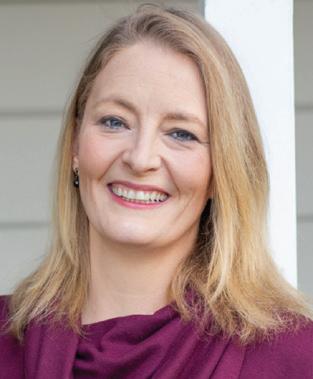
#PacVet2022

Select tracks offered virtually!
Hosted by the California Veterinary Medical Association


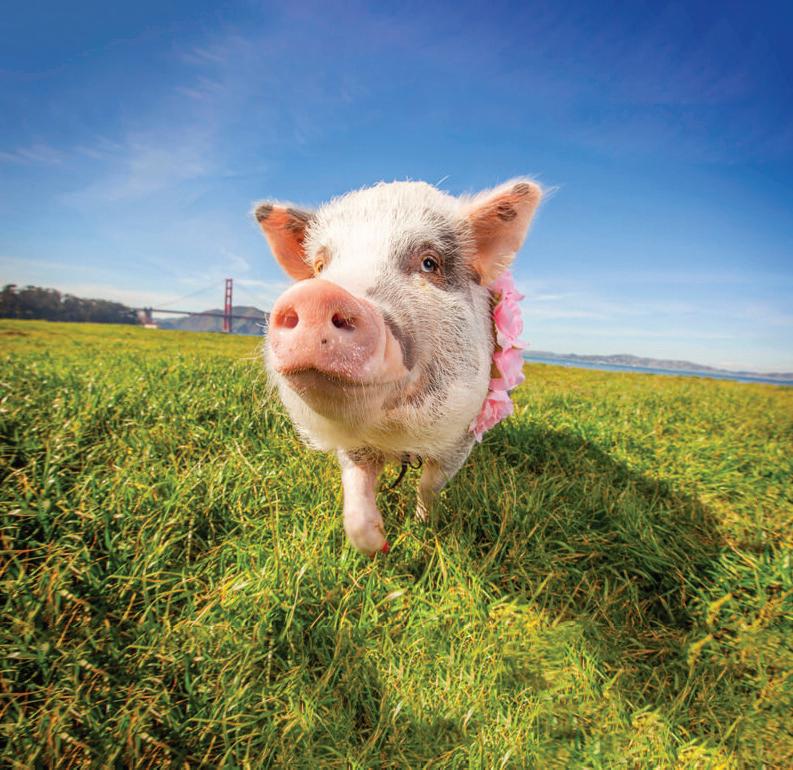

SPONSORED SYMPOSIA
Omni Practice Group Symposium (Thurs, Fri)
Rodney Johnston, MBA, CMA
c Maximize Your Veterinary Practice Transition



c Selling to a Corporation—What to Know
c What Happens If You Sell Your Practice Mid-Career?
Trupanion Symposium (Thurs, Fri)

Scott Huggins, DVM, MBA
c Are You the Rock or the Hard Place? Why You Should Re-evaluate the Role of Pet Insurance in Your Practice



PetDx Symposium (Fri)
Angela McCleary-Wheeler, DVM, Ph.D., DACVIM (Oncology)
c Cancer: DNA Goes Off Leash

Andi Flory, DVM, DACVIM (Oncology)
c Cancer Detection in 2022: Can a Blood Test Really Find Cancer?
Lilian Wong, DVM, MS
c Real-world Experience with Blood-based 'Liquid Biopsy' Testing for Cancer Detection in Dogs
SPONSORED LABS
Universal Imaging Ultrasound Lecture Lab (Thurs)
Jenelle Sharpley, DVM, MS, DACVR
c Abdominal Ultrasound Beginner Course
SOLD OUT Lecture and lab included. Limited to 20 registrants (DVMs only).
Karl Storz Endoscopy-America Hands-On Lab (Fri)
Timothy McCarthy, DVM, Ph.D., Diplomate Emeritus, ACVS ACVS Founding Fellow, Minimally Invasive Surgery (Small Animal Soft Tissue) ACVS Founding Fellow, Minimally Invasive Surgery (Small Animal Orthopedics)
c Lecture: The LAP S pay and Other Common Rigid Endoscopic Procedures in the General Practice (Open to all).

c Lab:* Introduction to LAP Spay, Vessel Sealing and Rigid Endoscopic Equipment, and Techniques for Success

*$199 additional registration fee required for hands-on lab. Limited to 36 registrants (DVMs only).
Our top priority is the safety and welfare of attendees and staff. Accordingly, we are requiring all in-person conference attendees, guests, participants, and staff to provide proof of full COVID-19 vaccination for admission to the conference and all related events. Proof of vaccination will be required before entering the meeting space.
“Full” vaccination shall consist of (a) two injections of the Moderna vaccine, (b) two injections of the Pfizer-BioNTech vaccine, (c) one injection of the Johnson & Johnson vaccine, or (d) the requisite number of injections of any other vaccines approved by the FDA for use against COVID-19 at the time of the event, as well as (e) any booster shots that are determined by relevant health authorities to be necessary at the time of the event to sustain the efficaciousness of the vaccines identified above. All such vaccinations must be received at least 14 days prior to the first day of the event.
Requests for exemptions from the requirement of full COVID-19 vaccination based on religious or medical reasons must be requested in writing no less than 30 days in advance of PacVet and shall be approved only after submission of appropriate documentation establishing the veracity of the exemption.* Submit documentation to info@pacvet.net.
The CVMA, host of the Pacific Veterinary Conference, will follow the masking guidelines established by the Hilton San Francisco Union Square and local and state health authorities. The CVMA reserves the right to update this policy at any time and to make changes as circumstances dictate or allow.
*Visit PacVet.net for the full current health and safety protocols, including exemption request requirements.


The Vet Expo is where you can meet with industry experts and explore new products and services. We appreciate our exhibitors who support PacVet. Please support them by visiting their booths, and check out their websites at PacVet.net. Their contributions lower conference costs!

c Advanced Monitors Corporation
c AmeriVet
c Analgesic Services Inc.
c ASPCA® Pet Health Insurance
c Assisi Animal Health
c Avid Identification Systems
c Banfield Pet Hospital
c Bank of America Practice Solutions
c BCP Veterinary Pharmacy
c Blue Buffalo (Blue Natural Veterinary)
c Blue Pearl Specialty & Emergency Pet Hospital
c Boehringer Ingelheim
c California Veterinary Medical Association
c California Veterinary Medical Foundation
c California Veterinary Medical Reserve Corps
c Capstone Financial Resources
c CareCredit
c Clarius Mobile Health
c Companion Pet Partners
c CNA Insurance
c CP Medical
c Doctor Multimedia
c Elanco Animal Health
c Epicur Pharma
c Esaote North America
c Ethos Veterinary Health
c ezyVet
c First Financial Bank
c Flea Destroyer
c GlobalVetLink
c Golden Pet Rx
c Guide Dogs of America
c H&O Equipments
c Hill's Pet Nutrition
c IDEXX Laboratories

c Karl Storz Veterinary Endoscopy-America, Inc.
c Lap of Love
c Live Oak Bank
c LogRx
c Medical Illumination
c Medical Pet Shirts
c Merck
c MiDOG LLC
c Midwest Veterinary Supply
c Mixlab
c Moichor
c Multi Radiance Medical
c Necrospy Services Group
c Omni Practice Group
c Pacific Professionals, Inc.
c PetDx
c PetIQ
c petMAP
c Preferred Employers Insurance
c PSIvet
c Radiocat
c Regency Honoring Pets
c Respond Systems
c Roo
c Rose Micro Solutions
c Royal Canin
c Samsung Ultrasound
c Scratch
c SmartPractice
c Solutions by Design
c Standard Process, Inc.
c Summus Medical Lasers
c Trupanion
c Tuttnauer USA
c UC Davis Veterinary Medical Teaching Hospital
c Universal Imaging Inc.
c US Bank
c Van Beek Natural Science
c VDI Laboratory
c Veterinary Insurance Services Company (VISC)
c VetMatrix
c VetnCare
c VetriScience Laboratories
c Victor Medical
c ViziSites
c Wedgewood Pharmacy
c Wells Construction, Inc.
c Western Veterinary Partners
c Xoran Technologies
c Zoetis
Cardiology (Thurs, Fri)
HYBRID
Heidi Kellihan, DVM, DACVIM (Cardiology)
Sponsored by Flea Destroyer
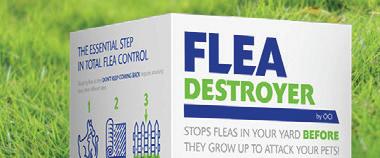
c Myxomatous Mitral Valve Disease: An Update
c Feline Cardiomyopathies: An Update
c Diet-Associated Cardiomyopathy in the Dog: An Update
c A Cardiologist’s Interpretation of Thoracic Radiographs
c Overview of Canine Congenital Cardiac Disease
c Cardiac Emergencies
Dermatology (Thurs, Fri)
Wayne Rosenkrantz, DVM, DACVD
Sponsored by Boehringer Ingelheim
c Management of Canine Atopic Dermatitis: Where Do the New Treatments Fit In?



c Approach to Canine Otitis Externa
c Management of the Allergic Cat
c Canine Geriatric Dermatology
c Methicillin Resistant Pyoderma: How to Deal with This Emerging Problem ‡
c Canine Pediatric Dermatology
Immune-Mediated Diseases, General Medicine (Thurs, Fri)
Andrew Mackin, BVMS, MVSc, DVSc, FANZCVSc, DACVIM (SAIM)
c Immune-Mediated Hemolytic Anemia
c Immune-Mediated Thrombocytopenia
c Immunosuppressive Therapy: Better Use of ‘Established’ Drugs
c Immunosuppressive Therapy: What’s New?
c Immune-Mediated Polyarthritis
c Fever of Unknown Origin
Neurology (Sat, Sun)
Rebecca Windsor, DVM, DACVIM (Neurology)
c Attack of the Itises: Review of Immune-Mediated Neurological Diseases
c Cannabidiol as an Adjunctive Treatment for Canine Epilepsy

c The Trials and Tribulations of Feline Neurology
c Emergency Seizure Management
c Recognition and Management of Neuropathic Pain in Veterinary Patients
c When the World Is Spinning
c Neurological Diseases of Young and Old
Nutrition (Fri, Sat)
Valerie Parker, DVM, DACVIM (SAIM), DACVN
c Obesity Prevention and Management
c Unconventional Diets
c Nutritional Management of Chronic Enteropathies (parts 1 & 2)
c Nutritional Management of Chronic Kidney Disease (parts 1 & 2)
c Addressing Inappetence in Dogs and Cats
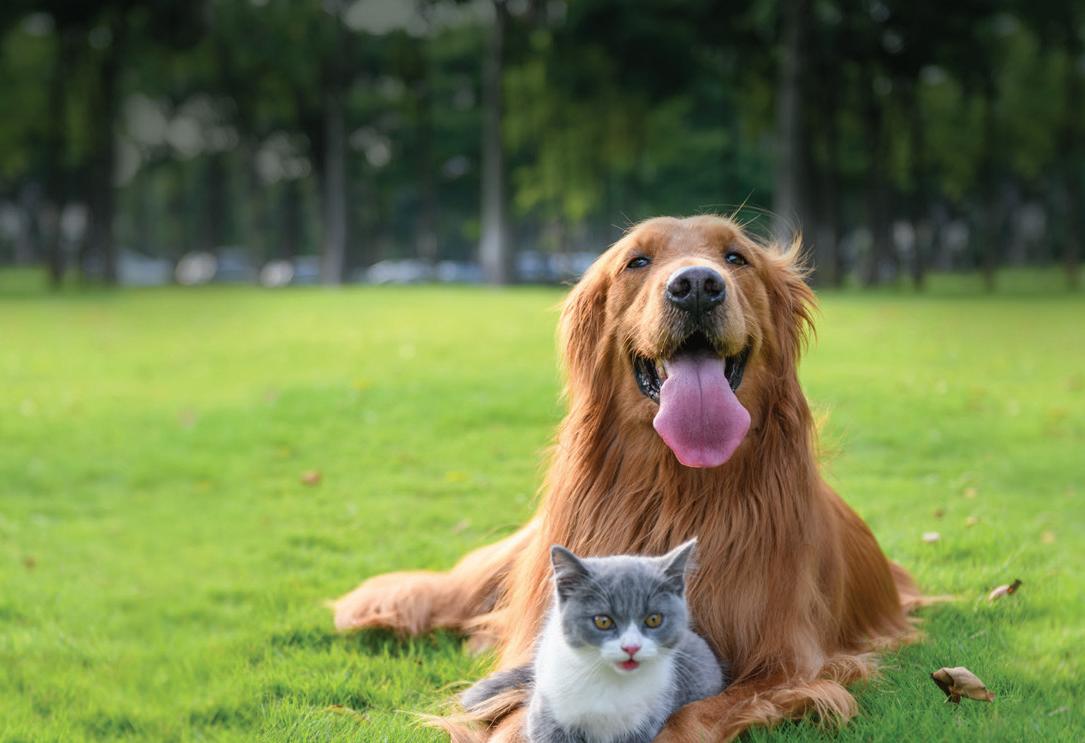
Oncology (Fri, Sat)
Sue Ettinger, DVM, DACVIM (Oncology)
c Canine Lymphoma for the Busy Practitioner
c Feline Lymphoma for the Busy Practitioner
c Osteosarcoma: Review and What’s New in 2022
c Hemangiosarcoma Cliff Notes: What You Need to Know

c What’s New in Cancer
c Canine Mast Cell Tumor for the Busy Practitioner
c Cancer ABCs: Aspirates, Biopsies and Cytology
‡ This course satisfies the one hour of California CE requirement on the judicious use of medically important antimicrobial drugs.


Keynote Presentation (Thurs)
James Giles III, DVM, MS, DACVS-SA
The Role and Medical Management of Military Working Dogs in Combat

Ophthalmology (Thurs, Fri)
Melanie Landry Church, DVM, DACVO
c Enhancing Your Eye Exam Skills (Canine/Feline/Exotic)
c Ocular Emergencies (Canine/Feline)
c Corneal and Tear Film Diseases (Canine/Feline)
c Third Eyelid and Eyelid Diseases (Canine/Feline)
c Fundic Evaluation and Retinal Diseases (Canine/Feline)
c Cataracts and Their Short- and Long-Term Sequelae (Canine)
Pharmacology (Sat, Sun)
Claire Fellman, DVM, Ph.D., DACVIM (SAIM), DACVCP
c Updates in Feline Diabetes: Which Insulin Do I Choose?
c Feline Pancreatitis and Triaditis: How to Recognize Them and What to Do
c Constant Rate Infusions: What, How, and Why?
c Practical Pharmacology for the Non-Pharmacologist
c Frustrating Feline Anemias: Differentials and Diagnostics/Management and Case Examples
c Rational Selection of Antimicrobials: An Update on ISCAID Guidelines ‡
Dentistry and Maxillofacial Surgery (Thurs, Fri)
Graham Thatcher, DVM, DAVDC
c To Extract or Not to Extract: Exodontia vs. Endodontics
c Tips and Pitfalls of Challenging Extractions and Their Complications
c Oral Mass Assessment and Diagnosis: What Should Be Done Prior to Referral?
c Periodontal Disease(s): Treatment
c Dentistry Made Easy: Five Pearls to Help Decrease Profanity in the Dental Operatory
c 3D Printing and Virtual Surgical Planning in Oral and Maxillofacial Surgery
Orthopedic Disease, Osteoarthritis Management (Thurs, Fri)
Nina Kieves, DVM, DACVS-SA, DACVSMR
c Comprehensive Orthopedic Exam
c Feline Orthopedic Disease
c Forelimb Lameness – Is It Shoulder or Elbow?
c I Diagnosed Elbow Dysplasia – What Now?
c Cruciate Disease – Current Recommendations
c Patellar Luxation – Practical Tips for Evaluation and Treatment
Orthopedics (Fri, Sat)
Brian Beale, DVM, DACVS, ACVS Founding Fellow MIS
c The Orthopedic Exam – How to Reach a Diagnosis in 10 Minutes or Less!
c Understanding Osteoarthritis and Management Strategies in Dogs and Cats
c Partial CrCL Tears – How Should I Diagnose and Treat?
c Meniscal Tears – Secrets to Diagnosis and Tricks for Treatment
c Orthopedic Disasters – Trying to Come Out Smelling Like a Rose
c Feline Orthopedic Surgery: They Are Not Just Small Dogs
c Simple Ways to Treat Complex Fractures for the Practitioner
Soft Tissue (Sat, Sun)
Erin Gibson, DVM, DACVS (Small Animal)
c Wound Management and Skin Reconstruction (parts 1 & 2)
c Intestinal Surgery Tips and Techniques
c Splenic Disease and Surgery
c Surgery of the Lower Urinary Tract
c GDV and Gastropexy Techniques
c Minimally Invasive Surgery for the General Practitioner
Avian and Reptile Hematology (Fri, Sat)
Victoria Joseph, DVM, DABVP (Avian)
c Comparative Avian and Reptile Clinical Hematology
c Comparative Avian and Reptile Response to Clinical Diseases
‡ This course satisfies the one hour of California CE requirement on the judicious use of medically important antimicrobial drugs.

Avian/Small Mammals (Sat, Sun)
Hugues Beaufrère, DVM, Ph.D., DACZM, DABVP (Avian), DECZM (Avian)
c Medical Management of Gastrointestinal Stasis in Rabbits
c Common Veterinary Procedures of Guinea Pigs
c Bumblefoot in Raptors: The Old and the New
c Clinical Biochemistry in Birds
c Lipid Disorders in Psittacine Birds
c Can You Take the Heat: Thermographic Imaging in Birds
c CT-Scan Indications and Common Lesions in Birds
c Case Discussions, Questions, and Conversation
Backyard Poultry (Thurs)
Lisa Tell, DVM, DABVP (Avian) and ACZM
c The Ins and Outs of Extra-Label Drug Use in Backyard Poultry

c Insights on How WDI Recommendations Are Established for Backyard Poultry Following Extra-Label Drug Use
c Extra-Label Drug Use in Backyard Poultry: Specific Examples and Cases
c Case Discussions, Questions, and Conversation
Clinical Pathology and Laboratory Medicine (Fri, Sat)
Carolyn Cray, Ph.D.
c What, How, and Why of Acute Phase Proteins
c Protein Electrophoresis of Plasma from Non-Traditional Species
c Aspergillosis: Spectrum of Infection with Emphasis on Avian Species
c Encephalitozoon cuniculi:Biology, Infection, and Diagnostic Testing
c Sample Collection, Hematology, Chemistry, and Reference Intervals
c Case Discussions, Questions, and Conversation
Reptiles (Thurs, Fri)
Scott Stahl, DVM, DABVP (Avian)
c Management of Respiratory Disease in Snakes
c Medical and Surgical Management of Dystocia in Snakes
c Husbandry and Medical Conditions of the Crested Gecko
c Topics in Reptile Theriogenology: Sexing Techniques; Determining Gravidity
c Clinicians Approach to the Old-World Chameleon Patient
c Case Discussions, Questions, and Conversation
DISASTER MEDICINE
Emergency and Critical Care (Fri, Sat)
Kristin Zersen, DVM, DACVECC
Sponsored by CAVMRC
c How to Use Checklists in Your Practice
c Fluid Resuscitation of the Trauma Patient

c Managing Soft Tissue Trauma and Wounds
c Diagnosis and Management of Spinal Trauma
c Diagnosis and Management of Head Trauma
c Diagnosis and Management of Thoracic Trauma
c Diagnosis and Management of Abdominal Trauma
EQUINE
Infectious Diseases and Clinical Neurology (Thurs, Fri, Sat)
Sally DeNotta, DVM, Ph.D., DACVIM
c Clinical Approach to Ataxia in the Sport Horse
c Practical Neurology in the Field (Neuro Exam, CSF Taps, Etc.)

c EHV1and EHM – Diagnosis, Management, and Mitigation Strategies During Outbreaks
c Infectious Neurologic Disease Update (EEE, WNV, EPM)
c Neuro Cases – What’s Your Diagnosis?
c News Hour: Recent Papers for Field Practitioners

c Colitis Management in the Field

Hill’s Prescription Diet Derm Complete is our masterpiece.


The only clinically tested nutrition for both food and environmental allergies (among leading brands in North America).
Ask your Hill’s rep about allergy care that’s A STEP AHEAD FOR THEIR BEST LIFE

Invasive Surgical Procedures (Fri, Sat)
Santiago Gutierrez-Nibeyro, DVM, MS, DACVS-LA, DACVSMR
c Frequent Upper Airway Diseases of the Horse

c Complications Following Equine Elective Arthroscopy
c Review of Diagnostic Analgesia in the Horse
c Current Treatment Options for Refractory Osteoarthritis of Low-Motion Joints
c Advanced Equine Diagnostic Imaging Modalities


c Frequent Soft Tissue Injuries of the Equine Digit
c Challenging and Elusive Equine Musculoskeletal Injuries
Muscle Pathology/Genetic Diseases (Thurs, Fri)
Stephanie Valberg, DVM, Ph.D., DACVIM, DACVSMR
c Diagnostic Work-up for Muscle Dysfunction
c Acute Treatment of Rhabdomyolysis and Causes of Nonexertional Rhabdomyolysis
c Polysaccharide Storage Myopathy in Quarter Horses
c Exercise Intolerance in Warmblood Horses
c Genetic Testing in Horses
c Shivers and Other Movement Disorders
c Disorders Related to Vitamin E
HOBBY ANIMAL
FARAD – Small Ruminants (Thurs, Fri)
Lisa Tell, DVM, DABVP (Avian) and ACZM
c The Ins and Outs of Extra-Label Drug Use in Small Ruminants
c Extra-Label Drug Use in Small Ruminants: Specific Examples and Cases
INTEGRATIVE MEDICINE



Oncology (Fri, Sat)
Kendra Pope, DVM, DACVIM (Oncology), CVA, CVCH, CVFT, CVTP

c Introduction to the Integrative Oncology Toolbox
c Evidence and Use of Acupuncture in Cancer Care
c Herbs and Dietary Supplements in Cancer Care
c Anti-Cancer Mechanisms of Action in Herbal Therapy
c Herb-Drug Interactions in Veterinary Oncology
c Integrative Nutrition and Food Therapy for Cancer Patients
c Integrative Oncology in Practice – Case Based Review of Multimodal Treatment Cases
PRACTICE MANAGEMENT
Sponsored by VISC
Ask the Attorneys — Your Legal Questions Answered (Sat)
Aaron Claxton, Wilke Fleury LLP
Jizell Lopez, Wilke Fleury LLP
Stephen Marmaduke, Wilke Fleury LLP
Ask the Experts — Practice Managers Share Their Secrets (Sun)
Sponsored by CareCredit
Leslie Boudreau, BASVT, RVTg, CVPM, PHR, PHRca, SPHR
Andrea Crabtree, BS, CVPM, SPHR, PHRca, CCFP, Fear Free® Certified



Melissa Tompkins, BS, CVPM, PHRCA, CCFP
Common Practice Management Matters (Sat, Sun)



Melissa Tompkins, BS, CVPM, PHRCA, CCFP
Sponsored by CareCredit
c Compassion Fatigue for Veterinary Professionals

c Are You Creating Your Own Drama? Do You Worry About Things That Haven’t Happened Yet?
c Emergency and Disaster Planning for the Veterinary Hospital
c Toxicity in the Workplace

c The Idiot’s Guide to Hiring and Recruiting the Best Team Members
c Can a Manager Really Do It All?
c Talking to Clients About the Most Important Appointment – the Euthanasia
Employer’s Rights and Responsibilities (Sat)

Aaron Claxton, Wilke Fleury LLP
Sponsored by VISC
c Employer’s Rights and Responsibilities
Hiring, Employee Engagement, and Customer Service (Thurs, Fri, Sun)
Leslie Boudreau, BASVT, RVTg, CVPM, PHR, PHRca, SPHR
Sponsored by CareCredit
c Hiring: Hire Smarter – Not Harder
c Hiring: In the Trenches: They’re Not ‘Soft Skills,’ They’re ‘Essential Skills’
c Hiring: In the Trenches: Onboarding New Hires for Success

c Crisis or Crossroads? What Can Credentialed Veterinary Technicians Bring to Practice?
c Building a Culture of Employee Engagement
c Effective Meetings to Motivate Your Team
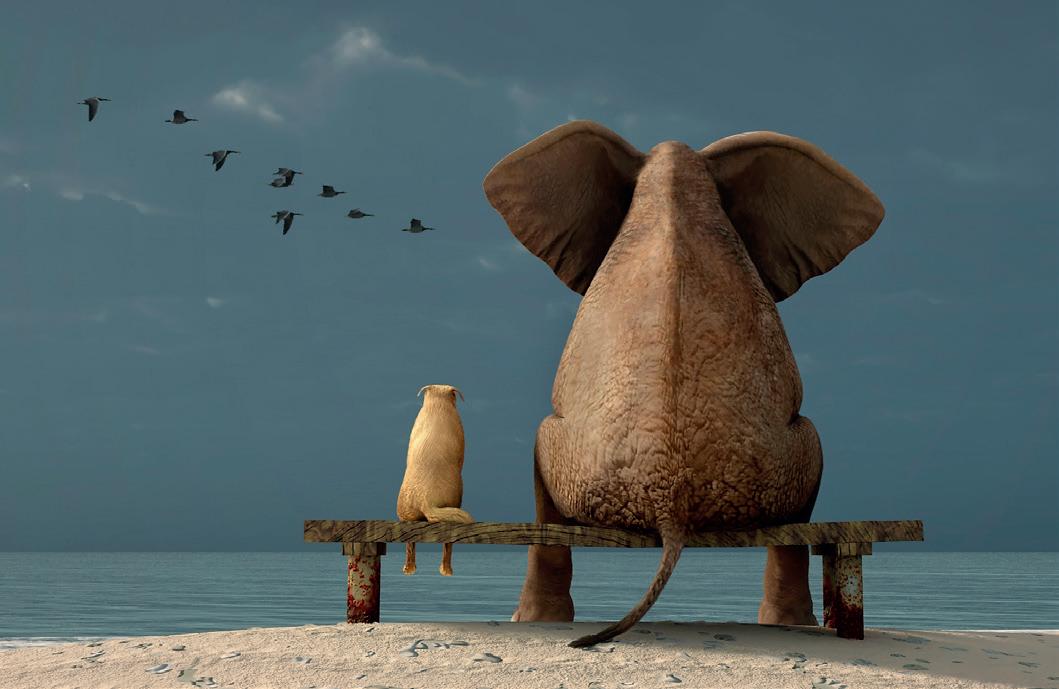
c Offering Concierge Service? What Does Customer Service Look Like in 2022?


Independent Contractors (Sat)
Jizell Lopez, Wilke Fleury LLP


Sponsored by VISC
c Independent Contractors
Recordkeeping (Sat)
Stephen Marmaduke, Wilke Fleury LLP
Sponsored by VISC
c Recordkeeping
Tools to Work on Your Practice; Employees Life Cycle (Thurs, Fri, Sun)
Andrea Crabtree, BS, CVPM, SPHR, PHRca, CCFP, Fear Free® Certified
Sponsored by CareCredit
c Work ON Your Practice, Not Just IN Your Practice
c Employees – Our Most Valuable Asset
c Coaching, Reviews, and Feedback
c Put Me in Coach! Developing Your Leadership Team
c Courageous Conversations and Communication with Clients and Co-Workers
c 5-Min Consult to the Practice P&L, What KPIs Should Be Evaluated
c Tough Talks with Your Team
SHELTER MEDICINE
Infectious Diseases (Thurs, Fri)
Elizabeth Berliner, DVM, DABVP (Shelter Medicine Practice; Canine and Feline Practice)
c Kittens Part I: Morbidity and Mortality in Shelters and Rescues
c Kittens Part II: Management and More – Best Care Practices


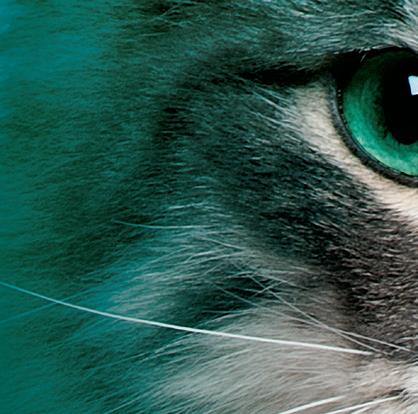
c Strategic Use of Diagnostic Tests in Animal Shelters
c Diagnosis and Management of House-soiling in Shelter Cats

c Companion Animal Population Health: It’s About Much More Than Sheltering
c Design and Staffing of Medical Programs in Shelters
Shelter and Community Based Approaches to Animal Welfare (Thurs, Fri)



Cynthia Karsten, DVM, DABVP (Shelter Medicine Practice)
c Capacity for Care…for People
c Introducing Cal4All
c The Right Place, Time, Care, and Outcome (parts 1-4)
Shelter Medicine Grab Bag (Thurs, Fri)
Elizabeth Berliner, DVM, DABVP (Shelter Medicine Practice; Canine and Feline Practice)
Cynthia Karsten, DVM, DABVP (Shelter Medicine Practice)
c Ask Your Burning Questions About Shelter Medicine Protocols and Procedures
c Ask Your Burning Questions About Tackling Medical Challenges in the Shelter Setting
Help fill nutritional gaps with Standard Process Veterinary Formulas™




See how we can support your pets, and your practice, at
We are happy to provide equipment for PacVet 2022 CE workshops.
Please visit our booth at the Conference to see our full line of diagnostic imaging equipment – the latest technology in Ultrasound, Digital X-ray, CT and MRI

We look forward to seeing you! (914) 666-6200 I universalimaginginc.com
TECHNICIAN
Nutrition (Thurs)
Vicky Ograin, MBA, RVT, VTS (Nutrition)
c Myth Busters: Unraveling Internet Pet Food Myths (parts 1 & 2)

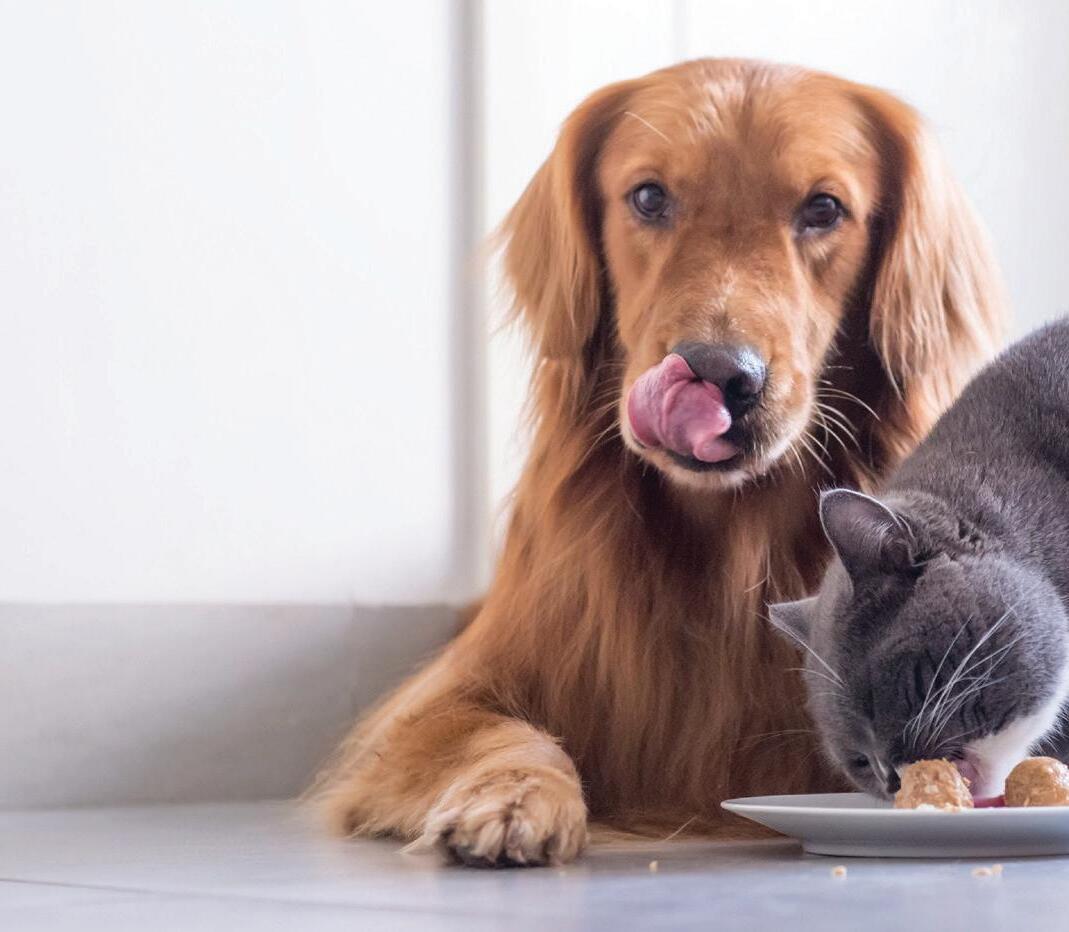
c The Golden Years – Dogs and Cats Aging Gracefully
c Nutritional Counselor Program: Get Inspired to Run Your Own Nutritional Consultation
c Dilated Cardiomyopathy in Dogs: Is It Diet Related?
c Management of Feline Lower Urinary Disease
c Challenges of Weight Loss in Pets
Physical Rehabilitation (Sun)
Sandy Gregory, RVT, M Ed, VTS (Physical Rehabilitation), CCRA
c Wellness Factor – What Can You Do to Prevent Yourself from Going to Rehab?
c Get the Best Mechanical Advantage with Your Patient and Yourself
c Nursing Care of Rehab Patients – Including Devices Like Harnesses, Booties, and Carts
c Physical Rehab for the Non-Typical Patient (Birds, Cats, Reptiles, Etc.)
c Senior Moments: Senior to Geriatric Care – New Thoughts
Small Animal Clinical Practice (Fri)
Liza Rudolph, BAS, RVT, VTS (CP-CF, SAIM)
c Bringing Vaccine Guidelines to Life
c Ins and Outs of Blood Pressure Measurement
c Flexible GI Endoscopy for Veterinary Technicians
c Advanced Skills in Clinical Practice
c Veterinary Nursing Plans
c Diabetes Mellitus
c Diabetes Monitoring
Surgery (Sat)
Heidi Reuss-Lamky, LVT, VTS (Anesthesia/Analgesia), (Surgery), Fear Free® Elite Certified Professional
c Who Needs an Anesthetic Plan? YOU DO!
c Purr-fect Feline Anesthesia
c Hypothermia – What’s the Hype?
c Keys to High Level Disinfection and Sterilization
c Role of the Veterinary Surgical Scrub Tech
c “Oh, Sew Easy” – Understanding Suture Materials
c Perioperative Surgical Patient Care: Honoring the Bond
USDA VETERINARY ACCREDITATION
National Veterinary Accreditation Program
Orientation Seminar (Fri)
Dana Nelson, DVM, MPVM, MS
c Introduction to USDA, APHIS and NVAP
c Reportable Animal Diseases, part A
c Reportable Animal Diseases, part B
Lauren England, DVM, MPH
c Animal Movement and International Health Certification Process
Andrea Mikolon, DVM, Ph.D, MPVM
c Hot Topics
Emily Nietrzeba, DVM, MPH
c Orientation to State-Specific Programs and Services
USDA-NVAP: APHIS Approved Supplemental Training (AAST) (Thurs)



Emily Nietrzeba, DVM, MPH
c Module 4: Preventing Disease Introduction and Spread
Stacy Wong, DVM
c Module 7: Foreign Animal Disease Detection in Category I Animals
Lauren England, DVM, MPH
c Module 9: Interstate and International Health Certificates for Category Animals
c Module 34: Veterinary Export Health Certification System (VEHCS)
Katharine Starzel, DVM
c Module 13: Aquatic Animal Health Regulations and Health Certification
Dana Nelson, DVM, MPVM, MS
c Module 18: Avian Influenza and Newcastle Disease

Edie Marshall, DVM, MPVM, DACVPM
c Module 23: Use of Antibiotics in Animals ‡
WELLNESS
Improvise, Adapt, Overcome; Resilience, Flexibility, Growth (Sat)
Sponsored by VISC
Carrie Jurney, DVM, DACVIM (Neuro)
c Improvise, Adapt, Overcome
c Feedback Without Fatalities
c The Four Toxicities of a Team
c Crisis Intervention for Bipeds
SPONSORED SYMPOSIA
Omni Practice Group Symposium (Thurs, Fri)
Rodney Johnston, MBA, CMA
c Maximize Your Veterinary Practice Transition
c Selling to a Corporation – What to Know
c What Happens If You Sell Your Practice Mid-Career?
PetDx Symposium (Fri)
Angela McCleary-Wheeler, DVM, Ph.D., DACVIM (Oncology)
c Cancer: DNA Goes Off Leash
Andi Flory, DVM, DACVIM (Oncology)
c Cancer Detection in 2022: Can a Blood Test Really Find Cancer?
Lilian Wong, DVM, MS
c Real World Experience with Blood-based “Liquid Biospy” Testing for Cancer Detection in Dogs
Trupanion Symposium (Thurs, Fri)
Scott Huggins, DVM, MBA
c Are You the Rock or the Hard Place? Why You Should Re-evaluate the Role of Pet Insurance in Your Practice
SPONSORED LABS
Universal Imaging Ultrasound Lecture Lab (Thurs)
Jenelle Sharpley, DVM, MS, DACVR
c Abdominal Ultrasound Beginner Course
SOLD OUT Lecture and lab included. Limited to 20 registrants (DVMs only).
Karl Storz Endoscopy-America Lecture/Hands-On Lab (Fri)
Timothy McCarthy, DVM, Ph.D., Diplomate Emeritus, ACVS
ACVS Founding Fellow, Minimally Invasive Surgery (Small Animal Soft Tissue)
ACVS Founding Fellow, Minimally Invasive Surgery (Small Animal Orthopedics)
c Lecture: The LAP Spay and Other Common Rigid Endoscopic Procedures in the General Practice (Open to all)
c Lab:* Introduction to LAP Spay, Vessel Sealing and Rigid Endoscopic Equipment, and Techniques for Success



*$199 additional registration fee required for hands-on lab. Limited to 36 registrants (DVMs only).
For personal and business insurance tailored to the needs of veterinary professionals, visit visc-ins.com.
‡ This course satisfies the one hour of California CE requirement on the judicious use of medically important antimicrobial drugs.
California Veterinary Medical Reserve Corps Is Proud to Sponsor PacVet 2022CAVMRC


Whether it’s your first trip to San Francisco or you’ve been many times, there is always something new and exciting to discover in this eclectic city. Plan your visit at sftravel.com and check out special discounts available to PacVet attendees at PacVet.net.







The Pacific Veterinary Conference will be held at the Hilton San Francisco Union Square.

Hilton San Francisco Union Square
333 O’Farrell Street

San Francisco, California 94102
800.445.8667
Online Reservations
PacVet.net/San-Francisco/hotel-travel
$267 per night plus tax until May 28, 2022.



*Discounted rate available until deadline or until the block fills up, whichever comes first.

Airports
San Francisco International Airport | flysfo.com
Oakland International Airport | oaklandairport.com
Ridesharing Services
Uber | Lyft
Public Transportation
Bay Area Regional Transit (BART) | bart.gov
1. Online: It is quicker and easier to register online and pay by credit card. Visit PacVet.net.

2. Mail: Print and complete the registration form found at PacVet.net and mail or fax it with payment.
3. Call: 800.655.2862 to register over the phone.
4. Onsite: Register at the conference for in-person attendance only (fees will be higher).
Full conference registration for veterinarians, practice managers, veterinary technicians, and veterinary staff includes:
• CE sessions
• Vet Expo admission
• Continental breakfasts (all four days)
• Complimentary lunches and breaks in the Vet Expo (Friday and Saturday)
• Refreshment breaks
• Evening events
• Conference bag
• Access to all lecture notes
GO TO PACVET.NET FOR MORE INFORMATION ON:
• Staff group registration
• Discount practice team registration
• Sponsoring a DVM and/or RVT student
• Guest badges
• Exhibit hall-only registration
• Terms and conditions, including cancellation policy and health and safety protocols
• Virtual course offerings


Early-bird registration is good through March 24, 2022. There is a $70 savings based on onsite veterinarian full conference registration.

The CVMA Board of Governors and House of Delegates met on January 21–23, 2022 in a hybrid (in-person and virtual attendance) format to address issues facing the veterinary profession, hear reports from CVMA staff and other presenters, exchange information, and provide direction for 2022.
On the first day, CVMA Executive Director Dan Baxter, Veterinary Medical Board (VMB) Executive Officer Jessica Sieferman, VMB President Kathy Bowler, CVMA House of Delegates Chair Dr. Brent Wooden, and CVMA committee representatives reported to the Board of Governors. The CVMA Board also commissioned a task force to assist in crafting a position statement on the One Health initiative.
A joint meeting between the Board of Governors and House of Delegates on the second day featured a continuing education seminar on implicit bias led by Dr. Lisa Greenhill from the American Association of Veterinary Medical Colleges. Attendees learned about different types of bias, took online tests to measure their personal biases, and challenged their skills in managing common scenarios encountered in the workplace during breakout sessions. This seminar was part of the CVMA’s Unity initiative supporting diversity, equity, and inclusion within the veterinary profession.
Afterwards, Dan Baxter presented a legislative and regulatory update to the CVMA Board and House that included reporting on new laws, issues predicted to emerge during the upcoming legislative cycle, and regulatory developments at the VMB and the Board of Pharmacy. The group also heard reports from Dean Phillip Nelson of Western University of Health Sciences College of Veterinary Medicine, Dean Mark Stetter of the UC Davis School of Veterinary Medicine, and student representatives. Several CVMA leaders reported on developments at the committee level, including in the Political Action Committee and California Veterinary Medical Reserve Corp (CAVMRC) Steering Committee. CVMA Treasurer Dr. George Bishop also reported on the CVMA’s finances.
On the final day, the Board of Governors conducted its executive session, while the House of Delegates heard from local veterinary medical association representatives and discussed issues brought forth by members as well as legislative and regulatory issues presented on the previous day. Delegates further debated topics like California’s interactive continuing education requirement and the high attrition rate in the veterinary profession.
The CVMA extends our sincere sympathy to the friends and family of those remembered.
Dr. Lewis Brogan, a CVMA Life Member, passed away on December 20, 2021. After graduating from Kansas State University in 1968 with a degree in veterinary medicine, Dr. Brogan was enlisted as an officer in the United States Air Force and served two years as the base veterinarian at Beale AFB in Marysville, CA. He worked at and later purchased the Erickson Veterinary Hospital in Chico, CA before retiring in 2021.
Dr. Michael Floyd, a CVMA Life Member, passed away on January 5, 2022. Dr. Floyd earned his DVM degree from UC Davis in 1961. He went on to become one of the first veterinary dentists in the United States, operating the Orinda Veterinary Dental Service with his wife Nancy until they retired. Dr. Floyd maintained a lifelong relationship with the UC Davis School of Veterinary Medicine which included creating the first veterinary dental suite, developing a scholarship program for veterinary students, receiving the 1991 Alumni Achievement Award, and being named Chancellor’s Laureate, one of UC Davis’ highest honors. Dr. Floyd was also awarded the RVT’s Outstanding DVM of the Year from the CVMA and served as the director of the California Veterinary Medical Foundation Board.
Dr. James Lebo, a CVMA Life Member, passed away on November 27, 2021. Dr. Lebo graduated from the Washington State University School of Veterinary Medicine in 1961. He moved to the Sunnyvale, CA area in 1964, where he practiced until his retirement 26 years later.
Dr. Gary Smalley, a CVMA Life Member, passed away on January 5, 2022. Dr. Smalley received his DVM degree from UC Davis in 1971. In addition to being the owner of San Marcos Veterinary Clinic, Dr. Smalley served many roles at the CVMA, including as the District I CVMA Governor from 2003–2009, a member of the CVMA House of Delegates from 1998–2003, and a Board of Governors liaison for several committees and task forces.
In memory of deceased members, the CVMA makes a donation to the California Veterinary Medical Foundation. Its mission statement reads: “Nurturing kindness, education, and well-being for all animals, people, and the environment.”















THE CVMA CAN ASSIST YOU WITH ALL OF YOUR REGULATORY COMPLIANCE NEEDS. VISIT CVMA.NET/PRODUCTS.


The CVMA offers a series of 8¾” x 11¾” laminated plaques that are suitable for hanging in your practice and meet a number of regulatory requirements.

Required Postings
• Proposition 65 Warning (for practices with more than 10 employees)
























































































• Continuous Presence Not Provided (required if animals will be left on the premises for any period of time without someone present)
• California Abandoned Animal Act (if you hospitalize/board animals)
• Financial Interest Disclosure (if applicable)

• Written Prescriptions (gives clients written notification that they have the right to receive a written prescription)









Not Required but Recommended
• Prescription Drug Dispensing (helpful in explaining restrictions to clients)
The Radiation Compliance Kit is custom-designed to fulfill all of the regulatory requirements for veterinary practices. It includes required postings, the “Caution X-Ray” sign, radiation safety training materials, and detailed instructions on how to implement a radiation compliance program.

Various regulatory agencies require that every employee be given several pamphlets at the time of hire. It is recommended that employers provide the pamphlets to all current employees if they did not receive them at the time of hire.
Purchase your CVMA Guide to Cal/OSHA Compliance subscription today!
The CVMA Guide to Cal/OSHA Compliance is an online tool created specifically to help California veterinary practices with Cal/OSHA compliance. It includes educational materials, required forms, training templates, implementation and recordkeeping resources, and a step-by-step wizard that simplifies the process of creating a customized written safety plan for your practice. Each section has clear instructions and a logical progression which results in a safety program catered to each individual subscriber.
The California Department of Industrial Relations Division of Occupational Safety and Health (Cal/OSHA) has implemented emergency COVID-19 workplace prevention regulations which require California businesses to immediately implement extensive new workplace safety and health measures. They include a written COVID-19 Protection Program policy as part of the Injury and Illness Prevention Program (IIPP). The CVMA Guide to Cal/OSHA Compliance has been updated to include the required COVID-19 component.
The CVMA Guide to Cal/OSHA Compliance is available only to CVMA members. The online subscription-only guide can be accessed and updated at anytime.
For more information or to renew your subscription visit cvma-inline.net/regulatory-guide, call the CVMA at 800.655.2862, or email staff@cvma.net.
FOUR EASY WAYS TO ORDER
• SHOP ONLINE at cvma.net/products.
• CALL 800.655.2862 Monday–Friday between the hours of 8:30 AM and 5:00 PM
• FAX completed form found at cvma.net/order-form to 916.646.9156.
• MAIL completed form found at cvma.net/order-form to 1400 River Park Dr., Ste. 100, Sacramento, CA 95815.
The CVMA Guide to Cal/OSHA Compliance $279.00 Online only (no shipping fee or sales tax)
• Continuous Presence Not Provided (VMB requirement)

• Prescription Drug Dispensing – Prior exam required
•
Please allow up to 10 business days for the CVMA Guide to Cal/OSHA Compliance order to be processed. You will then be able to view the guide online by clicking on the CVMA Guide to Cal/OSHA Compliance link from the CVMA website home page after you log in. Please allow up to three weeks to receive the Employee Posting set, New Hire packets, plaques, and Radiation Compliance Kits. All returned items are subject to a 15% restocking fee. Shipping charges on returns are the customer’s responsibility. Credit will be issued only for returned items in original condition within 30 days.
Nearly all businesses in California with employees are regulated by agencies like the Employee Development Department, the Department of Industrial Relations, the Department of Fair Employment and Housing, and the Board of Equalization. But veterinary practices in the state are more specifically overseen by a range of state and federal agencies that enforce laws distinct to the veterinary profession. Here is a brief summary of those agencies and what they do.
The California Veterinary Medical Board (VMB) safeguards consumers and the well-being of animals by regulating veterinary medicine throughout the state. Part of its mission includes developing, maintaining, and enforcing professional standards, licensing veterinary professionals and their premises, and upholding the California Veterinary Medicine Practice Act. The VMB also administers examinations for licensing, writes regulations for veterinary practices, and investigates complaints from consumers, sometimes resulting in fines or, in the most egregious cases, license suspension or revocation.
The VMB issues several licenses and permits that must be applied for prior to practicing. They include veterinarian and
registered veterinary technician licenses, premises permits for veterinary businesses, and veterinary assistant controlled substance permits for veterinary assistants who access and administer controlled substances as part of their work duties. Licenses and permits range in cost and must be renewed annually or biennially, depending on the regulations for each type. For more information, visit vmb.ca.gov.
The California State Board of Pharmacy (BOP) regulates California pharmacies and licenses pharmacists. With respect to veterinary professionals, the BOP writes regulations for prescribers, including prescription rules, regulations regarding compounded medication, and required consumer disclosures (such as drug label requirements), among other offerings. The BOP also oversees Veterinary Food Animal Drug Retailers, who dispense veterinary drugs for food-producing animals. While the BOP’s authority does impact the profession as described above, veterinarians and veterinary practices are not required to register with the BOP.
The California Department of Justice (DOJ) requires all practitioners with DEA numbers to register with the Controlled Drug Utilization and Review Evaluation System (CURES) database, send in weekly reports

when controlled substances are dispensed, and utilize a DOJ-approved prescription pad when dispensing controlled substances. All veterinarians (prescribers) are required to register with CURES, regardless of whether they dispense controlled substances to clients. No registration fee is required. Separately, the Attorney General’s office, a distinct arm of the DOJ, will support the VMB during administrative hearings if a practitioner has been formally charged with violating the California Veterinary Medicine Practice Act.
The California Department of Public Health (CDPH) has three branches that commonly impact veterinary practices:
The Rabies Branch oversees rabies control efforts, vaccination mandate laws, and reporting/surveillance data.
The Medical Waste Management Program, which regulates the generation, handling, storage, treatment, and disposal of medical waste (including biohazardous, pharmaceutical, pathology, trace chemotherapeutic, and sharps waste), requires veterinary practices to register as Small Quantity Generators and pay a nominal annual registration fee.
The Radiologic Health Branch maintains regulations regarding radiation safety, registers radiationproducing machines, and inspects premises. Veterinarians must register each radiation-producing machine in their practice with the Radiologic Health Branch and pay significant biennial registration fees.
The California Environmental Protection Agency (EPA) Department of Toxic Substances Control (DTSC) ensures that hazardous waste is properly managed by generators through registration (required for most veterinary practices), inspections, investigations, and disposal via registered hazardous waste haulers. A nominal annual registration fee is required.
The California Horse Racing Board (CHRB) works to ensure the integrity, viability, and safety of the horseracing industry. The CHRB requires veterinarians who work on horse racing tracks to keep record of medications administered, lameness, and more. Some of these rules are created by the Medication and Track Safety Committee. Veterinarians may not work on the track without a separate license issued by the CHRB. A licensing fee is required.
The California Department of Fish and Wildlife (CDFW) maintains several branches, only two of which are directly involved in veterinary practice:
The Wildlife Branch is concerned with wildlife injuries and mortality events, disease surveillance, and wildlife health population monitoring.
The Law Enforcement (Wildlife Protection) Division enforces laws to protect wildlife, including employing game wardens who administer permits for owning prohibited species. Veterinarians in possession of or treating prohibited species must report to the Wildlife Branch within 48 hours. The CDFW will help to make case management decisions, coordinate care, and potentially transfer injured wildlife to one of its designated wildlife care facilities. As with the BOP, the CDFW maintains no veterinary registration requirements.
The United States Drug Enforcement Administration (DEA) creates and enforces laws regarding controlled substances, including proper usage, storage, and recordkeeping. The DEA requires practitioners to register in order to handle, order, or prescribe controlled substances. All veterinarians in California who offer services to the public must have their own DEA registration number. The DEA registration fee is considerable and must be paid every three years.
The United States Department of Agriculture’s (USDA) two branches that most commonly affect veterinary practices are the Animal Plant Health Inspection Service (APHIS) and National Veterinary Accreditation Program (NVAP) Both of these divisions supervise imports and exports of animals and grant accreditation to practitioners who issue health certificates for domestic and international animal movement. The USDA also investigates drug residue violations in animal agriculture operations. NVAP accreditation is free, but veterinarians must take mandatory continuing education courses every three years.
The United States Food and Drug Administration (FDA) manages new drugs and medical equipment, animal drug compounding, pet foods, extra-label drug use, and more. There are no FDA registration requirements for veterinarians.
More information on these agencies and their intersections with veterinary practices can be found at cvma-inline.net under Regulatory Compliance > State and Federal Agencies.
This article is for informational and general educational purposes only. It is not intended to take the place of legal advice nor should it be considered as a legal interpretation. Although significant effort has been made to ensure the accuracy and completeness of the information at the time of publication, the CVMA shall not be responsible for any errors or omissions, or any agency’s interpretation, application, or enforcement of the information presented herein.
The California Veterinary Medical Board (VMB) and its Multidisciplinary Advisory Committee (MDC) convened on January 18–20, 2022.
CVMA Executive Director Dan Baxter, Director of Regulatory Affairs Dr. Grant Miller, and veterinarian liaison Dr. Ken Pawlowski attended the online meetings on behalf of the CVMA. The following items were discussed during the recent meetings:
At the start of the meeting, both the CVMA and numerous equine practitioners from racetrack and private practice provided public comments requesting that the VMB agendize at the next meeting its complaint process and enforcement review, particularly in relation to equine cases. As a result of comments voiced by the CVMA and several concerned equine practitioners, the VMB elevated this issue to be on the agenda at its next meeting on April 20. In the meantime, the CVMA will provide information to the VMB identifying issues and taking suggestions to improve the VMB’s complaint review and enforcement process.
The new VMB President, Kathy Bowler, reported that public member Judy Ki resigned from the VMB due to time constraints.
The VMB directed the MDC to review the potential inclusion of industrial hemp recommendation guidelines in a revision of its currently published “Guidelines for Veterinarian Discussion of Cannabis Within the Veterinarian-Client-Patient Relationship.” In addition, the VMB asked the MDC to explore possibilities to expand registered veterinary technician (RVT) scope of practice.
The VMB voted to move its Uniform Standards for Substance Abuse policy forward in the rulemaking process. The standards have undergone extensive updates to conform with changing laws and to comport with standards from other health care licensing boards.
The VMB also voted to introduce legislation in 2022 to add another RVT to the board. Currently, there are approximately 12,500 licensed veterinarians in the state with four veterinarians serving on the VMB. In contrast, there are nearly 7,700 licensed RVTs in the state with only one dedicated RVT position. Board composition is dictated in statute and licensee appointment is done by the governor. Thus, to add another member to the VMB, state law must be amended.
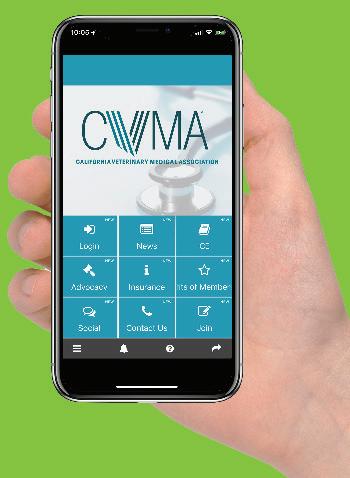
Enjoy
With the app, members can access:
Instant updates on important news and issues affecting the veterinary profession
A full list of CVMA continuing education offerings

The mobile-friendly version of California Veterinarian magazine

A handy membership directory
Member update capabilities and more.
Download now at the Apple and Google Play Stores.

The California Department of Food and Agriculture’s (CDFA) Animal Health Branch (AHB) is responsible for annually reviewing and updating the List of Reportable Conditions for Animals and Animal Products (commonly referred to as the “Reportable Disease List”). The Reportable Disease List mandates reporting of diseases and conditions that can have major impacts on California’s animal populations, including those affecting the food supply chain. AHB also solicits input for review of the Reportable Disease List from the World Organization for Animal Health (OIE), the United States Department of Agriculture Veterinary Services (USDA VS), the California Department of Public Health (CDPH), regulatory laboratory experts, and members of animal health advisory committees. Emergency conditions must be reported within 24 hours of suspicion or confirmation, regulatory conditions within 48 hours, and monitored conditions within 30 days.
The 2022 Reportable Disease List is included on the following pages, as well as online at cdfa.ca.gov/ahfss/ Animal_Health/pdfs/CA_reportable_disease_list_poster.pdf.
Notable changes to the 2022 Reportable Disease List include:
Downgrading SARS-CoV-2 from an emergency to a monitored condition (multiple species)
Downgrading sheep scabies from a regulatory to a monitored condition (Caprine/Ovine)
Addition of Influenza A H9 and emerging LPAI as a regulatory condition (Avian)
Addition of Corynebacterium pseudotuberculosis and Streptococcus equi spp equi as monitored conditions (Equine)
New legislation (SB 703) passed in 2021 and effective January 1, 2022, requires CDFA to establish a certification program for laboratories testing California’s livestock and poultry for emergency or regulatory conditions on this reportable disease list. CDFA’s certification program will ensure that regulated diseases are diagnosed using validated tests performed in an approved laboratory, thereby enhancing the accurate detection of conditions that trigger a regulatory response by the CDFA/USDA. Outreach and education are planned for the first calendar year with enforcement planned to begin in 2023.
Implementation of this laboratory certification program will further support CDFA’s ability to protect livestock populations, consumers, and California's economy from catastrophic animal diseases that significantly threaten animal health or public health.

January 20 22
*Pursuant to Section 9101 of the California Food and Agricultural Code, Title 3 California Code of Regulations § 797 and Title 9 Code of Federal Regulations Section 161.4(f)

WHO MUST REPORT: Any licensed veterinarian, any person operating a diagnostic laboratory, or any person who has been informed, recognizes or should recognize by virtue of education, experience, or occupation, that any animal or animal product is or may be affected by, or has been exposed to, or may be transmitting or carrying any of the following conditions, must promptly report the condition(s) per the lists below.
WHAT TO REPORT: Immediately report any animal disease not known to exist in the United States, any event with increased mortality and/or morbidity of unknown cause or source and any toxicology condition likely to contaminate animals or animal products (meat, milk or eggs).
IN ADDITION TO LISTED CONDITIONS, CALL IF YOU SEE: high morbidity or mortality, vesicles, CNS signs, uncommon ticks, hemorrhagic septicemias, unusual larvae in wounds, unusual or unexplained illness
Report any emergency, regulatory, or monitored condition within the provided time frame. Some diseases are listed under the major species of concern; if you see compatible signs for such conditions in another species, PLEASE REPORT!
EMERGENCY CONDITIONS – Report within 24 Hours of Discovery
Redding 530-225-2140, Modesto 209-491-9350, Tulare 559-685-3500, Ontario 909-947-5932, Headquarters 916-900-5002, or VS at 1-877-741-3690
MULTIPLE SPECIES
General, non-specific conditions: Unexplained high mortality or diseased animals; livestock exposed to toxic substances.
• Anthrax (Bacillus anthracis)1
• Crimean Congo hemorrhagic fever1
• Foot-and-mouth disease
• Heartwater (Ehrlichia ruminantium)
• Japanese encephalitis
• Melioidosis (Burkholderia pseudomallei)
• Rabies of livestock1
• Rift Valley fever
• Screwworm myiasis (Cochliomyia hominivorax or Chrysomya bezziana)
• Surra (Trypanosoma evansi)
• Vesicular stomatitis
BOVINE
• African trypanosomiasis (Tsetse fly diseases)
• Bovine babesiosis (Cattle tick fever)
• Bovine spongiform encephalopathy
• Contagious bovine pleuropneumonia (Mycoplasma mycoides mycoides small colony)
• Foot-and-mouth disease
• Hemorrhagic septicemia (Pasteurella multocida B/Asian or E/African)
• Lumpy skin disease
• Malignant catarrhal fever (wildebeest-associated form)
• Rinderpest
• Schmallenberg virus / Akabane
• Theileriosis (Theilera parva parva or T. annulata)
CAPRINE/OVINE
• Contagious caprine pleuropneumonia (Mycoplasma capricolum capripneumoniae)
• Foot-and-mouth disease
• Nairobi sheep disease
• Peste des petits ruminants (Goat plague)
• Schmallenberg virus / Akabane
• Sheep pox and goat pox
PORCINE
• African swine fever
• Classical swine fever
• Foot-and-mouth disease
• Nipah virus encephalitis
• Swine vesicular disease
AVIAN SPECIES
• Avian influenza (HPAI and H5/H7 LPAI)
• Turkey rhinotracheitis (Avian metapneumovirus)
• Virulent Newcastle disease (Exotic Newcastle disease, velogenic viscerotropic Newcastle disease)
EQUINE
• African horse sickness
• Dourine (Trypanosoma equiperdum)
• Glanders (Farcy; Burkholderia mallei)
• Hendra virus (Equine morbillivirus)
• Venezuelan equine encephalomyelitis
• Vesicular stomatitis
CERVIDS/LAGOMORPHS/CAMELIDS
• Middle East respiratory syndrome coronavirus (MERS-CoV)
1 Diseases in blue, seen in any species, are also reportable to California Department of Public Health (CDPH)
For additional information, contact CDFA (email: evet@cdfa.ca.gov or visit our website at www.cdfa.ca.gov/ah)
MULTIPLE SPECIES
• Brucellosis (B. melitensis, B. abortus, B. suis)1
• Pseudorabies (Aujeszky’s disease)
• Tuberculosis (Mycobacterium bovis)1
• Tularemia1
BOVINE
• Bovine brucellosis (Brucella abortus)1
• Bovine tuberculosis (Mycobacterium bovis)1
• Trichomoniasis (Tritrichomonas foetus)
CAPRINE/OVINE
• Caprine and ovine brucellosis (Brucella melitensis)1
• Scrapie
PORCINE
• Porcine brucellosis (Brucella suis)1
• Pseudorabies (Aujeszky’s disease)
AVIAN SPECIES
• Fowl typhoid (Salmonella gallinarum)
• Influenza A virus H9 and emerging LPAI
• Ornithosis (Psittacosis, avian chlamydiosis; Chlamydia psittaci)
• Pullorum disease (Salmonella pullorum)
EQUINE
• Contagious equine metritis (Taylorella equigenitalis)
• Eastern equine encephalomyelitis
• Epizootic lymphangitis
• Equine herpesvirus myeloencephalopathy (EHM)
• Equine infectious anemia
• Equine piroplasmosis (Babesia caballi or Theileria equi)
• Western equine encephalomyelitis
• West Nile Virus
CERVIDS/LAGOMORPHS/CAMELIDS
• Chronic wasting disease
• Rabbit hemorrhagic disease (Calicivirus)
MULTIPLE SPECIES
• Bluetongue
• Echinococcosis/hydatidosis (Echinococcus species)
• Epizootic hemorrhagic disease
• Johne’s disease (Paratuberculosis; Mycobacterium avium paratuberculosis)
• Leishmaniosis
• Q Fever (Coxiella burnetii)
• Severe acute respiratory syndrome Coronavirus-2 (SARS-CoV-2)1
BOVINE
• Anaplasmosis (Anaplasma marginale or A. centrale)
• Bovine cysticercosis (Taenia saginata)
• Bovine genital campylobacteriosis (Campylobacter fetus venerealis)
• Bovine viral diarrhea
• Enzootic bovine leukosis (Bovine leukemia virus)
• Infectious bovine rhinotracheitis (Bovine herpesvirus-1)
• Malignant catarrhal fever (sheep-associated form)
CAPRINE/OVINE
• Caprine arthritis/encephalitis
• Contagious agalactia (Mycoplasma agalactiae, M. capricolum subsp. capricolum, M. mycoides subsp. capri, M. putrefaciens)
• Enzootic abortion of ewes (Ovine chlamydiosis; Chlamydia abortus)
• Maedi-visna (Ovine progressive pneumonia)
• Ovine epididymitis (Brucella ovis)
• Salmonella abortusovis
• Sheep scabies (Body mange; Psoroptes ovis)
PORCINE
• Porcine cysticercosis (Taenia solium)
• Porcine reproductive and respiratory syndrome
• Senecavirus A
• Swine enteric coronavirus diseases, including transmissible gastroenteritis
• Swine influenza
• Trichinellosis (Trichinella spiralis)
AVIAN SPECIES
• Avian infectious bronchitis
• Avian infectious laryngotracheitis
• Duck viral hepatitis
• Goose parvovirus
• Infectious bursal disease (Gumboro disease)
• Influenza A viruses (see Emergency Conditions for HPAI and H5/H7 LPAI)
• Mycoplasmosis (Mycoplasma synoviae and Mycoplasma gallisepticum)
EQUINE
• Corynebacterium pseudotuberculois (Ulcerative lymphagitis; Pigeon fever)
• Equine herpesvirus-1 and 4 (excluding EHM)
• Equine influenza
• Equine viral arteritis
• Streptococcus equi spp equi (Strangles)
CERVIDS/LAGOMORPHS/CAMELIDS
• Camelpox
• Myxomatosis
REPORT FISH, AMPHIBIAN, CRUSTACEAN, BEE, AND MOLLUSK DISEASES listed by the OIE: https://www.oie.int/en/what-we-do/animal-health-and-welfare/animal-diseases/
WHERE TO REPORT: Department of Food and Agriculture, Animal Health Branch (AHB) District Offices: Redding: 530-225-2140, Modesto: 209-491-9350, Tulare: 559-685-3500, Ontario: 909-947-5932; AHB Headquarters at 1220 N Street, Sacramento, California 95814, email evet@cdfa.ca.gov, Phone: 916-900-5002, Fax: 916-900-5333; or the USDA, APHIS, Veterinary Services (VS) office at 1-877-741-3690
1 Diseases in blue, seen in any species, are also reportable to California Department of Public Health (CDPH)



Veterinary students from the UC Davis School of Veterinary Medicine and Western University of Health Sciences College of Veterinary Medicine will be presenting their research in the Vet Expo of the Pacific Veterinary Conference in San Francisco. The student presenters will be available to answer questions and further talk about their theses during lunch breaks on Friday, June 3 and Saturday, June 4 and during the afternoon break at 2:50 PM to 3:30 PM
UC DAVIS STUDENT POSTER PRESENTERS AND TOPICS
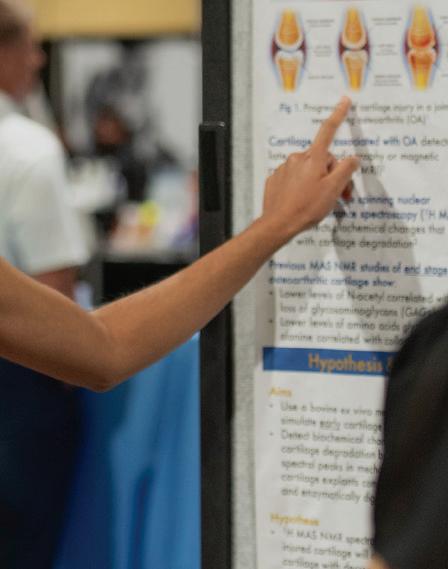
Makda Asrat, Class of 2027
Surveillance for Novel Coronaviruses in West African Bat
Catarina Bianchi, Class of 2024
Influence of Chondrodystrophy on Intervertebral Disc
Mineralization and Vertebral Geometry in the Nova Scotia Duck Tolling Retriever
Eleanor Pressman, Class of 2027
Methane Emissions from California Dairies Estimated Using Novel Climate Metric GWP-Star Show Improved Agreement with Modelled Warming Dynamics
Aryana Razmara, Class of 2026
Optimization of Expansion Techniques for Adoptive NK Cell Transfer in Dogs with Cancer
Victoria Tobin, Class of 2028
Interrogating the Gene Regulatory Network that Underlies
Pro-T Cell Fate Allocation by Gene Targeting and Single-Cell Transcriptomics
WESTERNU STUDENT POSTER PRESENTERS AND TOPICS
Cassandra Bernas, Class of 2024
A Low-Cost Treatment for Cranial Cruciate Ligament Disease
Simon Ettenger, Class of 2024
What’s Our Impact? Examining Accessible Veterinary Services at Western University of Health Sciences
Shane Forman, Class of 2024
The Effects of Pre-Operation Video Game Warm-Up on the Performance of Live Dog Laparoscopic Ovariectomy by Veterinary Students
Zaira Gomez, Class of 2023
Assessment of Visual Acuity in Ball Pythons (Python regius) Using Optokinetic Response
Ana Ramirez, Class of 2023
A Double-Blinded Placebo-Controlled Evaluation of Adipose Derived Mesenchymal Stem Cells in Treatment of Canine Atopic Dermatitis
Calling all UC Davis and WesternU alumni! You are invited to join your peers and current students at evening receptions on Saturday, June 4 from 5:30 PM to 7:00 PM. Chat with former classmates, make new friends, dine on hors d’oeuvres, and enjoy a no-host bar.


For nearly 70 years, UC Davis’ Veterinary Genetics Laboratory (VGL) has set the standard for excellence in veterinary genetic testing. The laboratory provides testing for more than 20 species, while also significantly contributing to education and research.
In the early 1990s, VGL became one of the first laboratories to use DNA markers for parentage verification. Shortly thereafter, the discovery of genetic causes for heritable disorders was unraveled, making DNA testing available for diagnostic purposes. In the past decade, advanced tools have accelerated discovery of genetic variants behind traits of interest, enabling marker-assisted mate selection and providing tools to inform clinical management decisions. Today, VGL offers more than 220 genetic tests for various coat color and production traits, genetic disorders, and parentage verification of several animal species to clients all over the world.
Over the years, VGL research has identified causes of genetic disorders and has shed light onto the application of DNA testing across animal populations. A recent publication by VGL researchers, in collaboration with the Royal Veterinary College, was the first to fully characterize a case of Fragile Foal Syndrome (FFS) in Thoroughbreds. VGL had previously identified the FFS mutation in several horse breeds but, until now, the lethal condition had only been diagnosed in warmblood breeds.
The study is one of many significant contributions to the veterinary community and highlights the importance of genetic testing to confirm clinical diagnosis and inform breeding decisions to prevent disease.
For information about this and other genetic tests, visit www.vgl.ucdavis.edu.
Western University of Health Sciences’ College of Veterinary Medicine has been helping to serve the pets of the Los Angeles area homeless population for more than a decade. Although the current pandemic has hampered some of that outreach, faculty and staff are hoping regular visits to shelters will resume soon.
The outreach began when Jamie Slinghuff, DVM 2010, began visiting a homeless encampment in Ontario with members of her church. Slinghuff and WesternU’s Christian Veterinary Mission Club partnered with the WesternU student chapter of the Association of Shelter Veterinarians in 2009 to provide vaccines, exams, spaying, and neutering services to pets at the encampment through the college’s Veterinary Ambulatory Community Services (VACS) vehicle.
Dr. Frank Bossong said the relationship has continued ever since, with WesternU receiving modest grants from
Feeding the Pets of the Homeless, Inc. to help fund the project, which has moved on to Mercy House shelter in Ontario.
Like so many aspects of campus life, however, the current pandemic has disrupted WesternU’s work. Dr. Gillian Angliss—who currently oversees the VACS program—said the mobile unit will stay on campus this Fall to provide second-year students with hands-on educational opportunities.
Dr. Angliss said that veterinary work with the homeless or with other organizations serving those clients with barriers to pet care is good for both society and for the veterinarian. “We have evidence that [pet ownership] helps them manage mental health issues, substance issues, things like that,” she said.
CVMA Online Seminars are a quick, easy, and convenient way to fit CE into your busy schedule wherever you have a high-speed internet connection. The CVMA offers most interactive webinars on two different dates and times, allowing you to pick the presentation that works best for you.

Stephen Marmaduke | Jizell Lopez, Wilke Fleury LLP
March 16, 2022 | 12:00 PM–1:00 PM Non-supervisors (1 CEU)
12:00 PM–2:15 PM Supervisors (2 CEUs)

March 22, 2022 | 5:00 PM–6:00 PM Non-supervisors (1 CEU)
5:00 PM–7:15 PM Supervisors (2 CEUs)

Employers with five or more employees must provide sexual harassment and abusive conduct prevention training for all employees every two years. New supervisory employees must still be trained within six months of assuming their supervisory position, and new non-supervisory employees must be trained within six months of hire. Additionally, temporary, seasonal, and other employees hired to work less than six months require this training within 30 calendar days after the hire date or within 100 hours worked, whichever comes first.
This webinar will meet the requirement for one hour of training for non-supervisor employees and two hours of training for supervisors.
Jeannine Berger, DVM, DACVB, DACAW, CAWA
April 5, 2022 | 5:30 PM–6:45 PM (1.5 CEUs)
April 13, 2022 | 12:30 PM–1:45 PM (1.5 CEUs)
In this presentation, we will explore how cat scratching—a normal feline behavior— can lead to one of two unwanted consequences: either the owner seeks a permanent solution and asks for a surgical solution known as “declawing,” or the animal is rehomed or surrendered to a shelter. We will address the importance of cats performing normal behaviors, such as appropriate opportunities to scratch, and will explore humane solutions that are based on understanding the nature of this behavior. We will learn how correct tools, techniques, and newly developed products can positively impact the human-animal bond. This presentation aims to provide the veterinarian with talking points for a welfare-centered communication with owners of cats with scratching problems, hopefully eliminating the need for the very controversial surgical approach.
Register online by visiting the Learning tab at cvma.net or by phone at 800.655.2862.







Family Pet Hospital, for winning the veterinary clinic category of the “Best of San Joaquin 2021” awards. Owned by Dr. Jenny Wu, a member of the CVMA House of Delegates, Family Pet Hospital is a family-owned small business that offers veterinary services for dogs, cats, birds, and exotics. Other finalists include Lodi Veterinary Hospital and Pacific Veterinary Hospital, both of which boast CVMA members on their staffs. Congratulations to Dr. Wu and the other finalists for this honor!
All Creatures Veterinary Emergency Clinic, for winning the veterinary emergency category of the “Best of San Joaquin 2021” awards. With 42 years of veterinary practice under his belt, CVMA member Dr. Richard Turner opened All Creatures Veterinary Emergency Clinic in Stockton in 2015 with the goal of keeping veterinary care fair and affordable. Congratulations to Dr. Turner and his staff, as well as to the two other finalists, Lodi Veterinary Hospital and Venetian Pet Hospital, whose staffs also include CVMA members!







Dr. Racelle LaMar, for recently moving into the newly built Northtown Guardian Pet Hospital in Santa Rosa. Dr. LaMar’s original facility burned down in the Tubbs Fire four years ago, and after an outpouring of support from other practices, facilities, and individuals, Dr. LaMar and her staff were finally able to restart in a permanent facility. The CVMA wishes Northtown Guardian Pet Hospital all the best in its fresh start.

Dr. Georgina Marquez, for buying her own practice after 35 years of being a veterinarian. Dr. Marquez was able to purchase a practice in 2020—in the middle of the pandemic—and has come out on top, even buying the real estate a year later. Here’s to being fully in charge of your career and to your practice’s continued success, Dr. Marquez!


Alison Pankowski, for recently launching a veterinary software company with her sister. Alison, the CVMA’s 2021–2022 student representative for UC Davis, cocreated the software based on a desire to streamline the process of managing, requesting, reviewing, and transferring referral records. The CVMA commends your hard work, Alison!
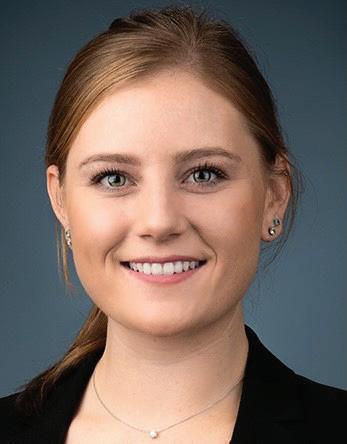
Do you have a recent proud achievement?


Let us help you celebrate your good news. Send us a message about a positive development in your personal or professional life—ranging from getting married to opening a new practice—along with a photo of yourself, and you might be featured in the next issue of Something to Wag About! For consideration, please email tdeoilers@cvma.net.


Life can be complicated. Get help with all of lifeʼs questions, issues, and concerns with LifeWorks. Any time, 24/7, 365 days a year.
,
about handling stress at work and home, parenting and child care, managing money, or health issues, you can
LifeWorkMoney FHealth amily
Retirement
Midlife
Student life
Legal
Relationships
Disabilities
Crisis
Personal issues
Parenting
Couples
Separation/divorce
Older relatives
Adoption
Death/loss
Child care
Mental health
Addictions
Fitness
Managing stress
Nutrition
Sleep
Smoking cessation
Alternative health
Time management
Career development
Work relationships
Work stress
Managing people
Coping with change
Communication
Saving
Investing
Budgeting
Managing debt
Home buying
Renting
Estate planning
Bankruptcy
CVMA members—check your email for an invitation to join sent from LifeWorks in January. If you cannot locate the email, please contact Jennifer Smith at jsmith@cvma.net.
 Member Assistance Program and innovative wellbeing resource
Member Assistance Program and innovative wellbeing resource
Place your ad in the Career Center at cvma.net. There are two options for classified advertising:
1. Online advertising
2. Online and in one issue of the California Veterinarian
CVMA Members NonMembers
*Price includes the first six lines of text. Each additional line is $10/$11 for non-members. A line consists of approximately 50 characters.
**If you wish to place a print ad only, contact Laura Phillips at 916.649.0599 or classifieds@cvma.net.
Online only
30 days online $149 $199
60 days online $249 $299
90 days online $349 $399
Online and in one issue of the California Veterinarian
60 days online + one issue of the California Veterinarian $299 $349
90 days online + one issue of the California Veterinarian $399 $449
POST AN ANONYMOUS AD OR RESUME
Resume – Post a confidential resume. Go to cvma.net. Click on the Resources tab then Classifieds in the right menu to get started.
Ad – Place a confidential ad by creating an anonymous email address and using it when posting your ad.
NORTHERN CALIFORNIA
Veterinarians
If you have any questions, please contact customer service at 860.437.5700, clientserv@yourmembership.com, or classifieds@cvma.net.
DEADLINE DATES FOR AD SUBMISSIONS IN THE CALIFORNIA VETERINARIAN:
Issue
Jan/Feb
March/April
May/June
July/Aug
Sept/Oct
Nov/Dec
Deadline
December 5
February 5
April 5
June 5
August 5
October 5
If your ad is received after the deadline, it will go into the following month’s California Veterinarian. After the deadline, the CVMA cannot alter or cancel ads. The CVMA reserves the right to edit copy and does not assume liability for contents of classified advertising. Prices subject to change without notice.
Are you looking for a better work life balance? Would you like to make your own schedule? Would you like to spend more quality time with your patients and see less patients per day? We are looking for a part time holistic veterinarian certified in acupuncture. Chinese herbal, Western herbal, food therapy or chiropractic certification are a plus but not required. We are a mobile practice specializing in small animal acupuncture and holistic care. All services are done in the client’s home. No general care, emergency care, urgent care or on-call. Integrative hospice and in-home euthanasia appointments can be seen if desired but are not required. A Companion Class 4 cold laser will be provided to you. $60,000 base salary + $500 CE, 1 week paid vacation and 401K for 3 days a week, 7 ½ hour days, Five 1 hour appointments per day. We also pay a production bonus quarterly of 40%. Create your own schedule in terms of days of the week and hours as long as they fit the specifications. You can use your personal vehicle and mileage will be compensated. If you already live in the Bay Area and would like to commute to Napa 3 days a week to see appointments, or if you want to re-locate to the Napa Valley for a better quality of life this may be a great position for you. I respect each individual doctor’s case management and enjoy collaborating as well. A shared opportunity for a full-time acupuncturist position is also available with Animal Healing Arts. Send cover letter and resume to kschmidt@napaholisticvet.com. www.napaholisticvet.com.
· NV7 Carson Valley Near Lake Tahoe - Sitting at the base of the Sierra Nevada Mountains is an area that embraces its history and thrives as the center of business for its 47,000 residents. Come for adventures and stay for the great restaurants and entertainment. The practice is located in Douglas County and sits just off Highway 395. Stay local and enjoy hiking, fishing and camping in seve ral great parks. Take a short trip to Reno, Nevada or South Lake Tahoe, California. In less than an hour residents can enjoy resorts, spas, ca sinos, and sell out concerts. This is a 2 DVM small animal practice in a freestanding building with 2 exam rooms. The practice has limited competition in the area and continues to grow. 2021 Gross Revenue was greater than $1,300,000. This practice has great growth over the years, averagi ng 15% per year, tripling gross revenue since 2001. Buyer’s after-debt income projected to be greater than $240,000. Real Estate is available for lease.



Practice Price: $920,000



· SCCA8 Ventura County - New Listing! Located in Camarillo, a desirable area of Ventura County is a 1.5 DVM practice grossing over $750,000. The facility sits in a convenient location surrounded by a mix of new industrial buildings and high-end housing developments. The area has a great economy and is a very desirable place to live. Live and work in the area or make the short commute to LA. Close to everything you could want to do in your off hours –sports, entertainment, short drives to the ocean, and access to international airports. It’s bathed in year-round sunshine and great weather. The area continues to grow and offers incredible shopping, dining, family-friendly entertainment, and endless business opportunities in Camarillo as well. Buyer’s after-debt income is estimated at $260,000. Real estate is available for lease. Practice Price: $520,000
· SCV10 San Gabriel Valley - Located 20 miles east of downtown LA in an area that is a mix of residential housing, retail business and industrial complexes. The community reflects all of southern California’s benefits. Find great entertainment, shopping and recreation. Live and work in a great community that embraces the past but provides great opportunity for the future. This practice is a 1 DVM small animal practice. The facility is 1,800 square feet with 2 exam rooms, pharmacy, office space, boarding facility and large waiting area. Gross Revenue in 2021 was greater than $780,000. Practice Price: $630,000 Real Estate: $500,000
· SCV1 Ventura County - Live close to all of the amenities of big city LA but far enough away to enjoy rolling hills, clean air and less traffic. The area supports a strong economy centered around small business. The community is in a perfect location and is easily connected to all southern California. Live thirty minutes from the beach, mountains, and an international airport. This 1 DVM Small Animal practice is in a 3,600 sq. ft freestanding facility with 5 exam rooms. Other features include indoor runs, boarding facility, multiple office spaces and stay-of-the-art ICU area. 2020 Revenue was greater than $771,000. Practice has huge upside potential if new owner chooses to add weekends to their schedule. Buyer’s after-debt income projected to be greater than $200,000 per year. This is a chance to own a great practice in a great area, free of smog and traffic. Practice Price: $799,000




· SCG7 Southwest LA Area - 2 DVM small animal practice that could easily support 1 to 2 more associates. Owner has worked at this practice for more than 40 years, and has slowed things down a bit. (Office hours end at 3pm). Originally established in 1934, the practice resides in an 8,100 sq. ft. free standing building with 3 exam rooms. It includes a 2 bedroom plus kitchen attached to the clinic. Its unique style has been recognized by the City of Los Angeles as a Historic Cultural Monument. Emergencies are handled by referral to a near by emergency practice. Revenue has been growing steadily over the past 3 years, and 2021’s revenue is expected to exceed $1.8MM. The real estate is available for lease with an option to purchase it in 2 to 3 years after the practice sale. The expected cashflow available for debt service is over $460,000. Buyer’s anticipated after-debt compensation will exceed $250,000 per year. Practice Price: $1,450,000
· NC66 Redding, California - 1+ DVM small animal practice located in a freestanding building that is 2400 square feet on nearly an acre lot. It was built in 1998, has 2 exam rooms and is constructed of stone & brick. Operated Monday thru Friday with no current office hours on the weekends providing plenty of personal time off. No need to worry about emergency calls late at night or on weekends, there’s an emergency clinic just 3 miles from the practice. Revenue has been increasing yearly, 2021 was over $1.15M and 2021 should beat that. Practice Price: $700,000 Real Estate Price: $695,000
2.5 doc private clinic in Sacramento looking for vet who is interested in providing wellness care and who wants to develop long connections with clients. 75% medicine, 25% surgery/dental. Mon – Sat. No eves/emergencies. Flex scheduling avail. 401k, Health ins, CE., dues paid. 1 year experience, California veterinary license. Email ktrue.753@gmail.com.
Expandable SA 60+ years practice near Long Beach CA on 2500SF corner-lot freestanding lot building. Retiring owner casually working about 25 hours weekly for health reasons. Buyers ONLY please call on Mondays 562.304.8836 after 10:30am with ID unblocked.
For Sale San Diego Small Animal Practice and R.E. Investment. Email: kelly3004@sbcglobal.net.
Small Animal Hospital for Sale - Santa Barbara County - Mature veterinarian (Cornell graduate) wishes to retire. Oneman, part-time practice potential for expansion. Leased space with large bright windows, sky light and wooden floors. Owner of shopping center eager to work with buyers. Location has great potential for emergency practice, buyer could add bathing, grooming, boarding and sale of pet food. Owner hopes buyer will continue our 30-year commitment to the community by providing quality low cost service. Owner can help finance. Please call: 805.736.8862 leave voice message, no texting.
Well established, prosperous vet practice for sale. Located in beautiful area of Sonoma County. Office is on 1.3 acre property, and option is available to purchase either the practice only, or the practice and property. Financially responsible buyers only. bmpalermo2@yahoo.com.
Busy full service small animal hospital for sale in beautiful Monterey County. Established 30+ years with loyal clientele and excellent staff. 1.5 doctor practice with room to grow, lease hold in busy shopping center. 1900 sq ft near ocean. Digital rads (including dental), Abaxis lab machines, computerized. Offices for 2 doctors, 2 exam rooms, 4 runs, 22 cages and separate isolation ward. Reduced hours recently- gross 2021 $1.1M. Practice price $850,000. Owner wants to retire! Email centeranimalhosp@att.net.
Want the quiet country life style? Forsyth is the county seat with hospital and schools located in Southeastern Montana... directly East on the interstate from Billings, MT. Mixed practice looking for employee or associate practitioner with potential to buy. The practice is haul-in for horses and cows with inside facilities, hydraulic chute, barn and run-in sheds. Small animal has kennels, surgical room, lab/prep tub room with exam and offices. There is in-house lab, digital radiography, and laser. We have the best clients. This is a great area for hunting, fishing and golf. rcsmith@rangeweb.net.
Omni Practice Group has several veterinary clinics for sale in Northern California.
• Thriving Small Animal Clinic in beautiful small town near Cal/Nev border. Last 12 months collections over $800k. Opportunity for growth as appointments are backlogged. Escape the hustle and bustle and move to paradise. (CAV3011).
• Successful well-established Small Animal Clinic in Sonoma County. Annual collections of $900k. Located in affluent neighborhood with highly desirable clientele. Room for growth. (CAV3013).
• Northern California - escape the hustle and bustle. Small animal clinic, 1 doctor practice, 1.5mil gross, high profit, stable business. Real estate is available. Nice facility, 3 exam rooms, 4000sq ft on a large parcel, room to expand. (CAV3016).
For more information, contact Rod Johnston #2055355 at 510-633-2697 or email rod@omnipg-vet.com. For the most current listings, please visit www.omnipg-vet.com.
Cal/OSHA requires a current written plan and active ongoing health and safety program in every workplace.
The CVMA Guide to Cal/OSHA Compliance has everything you need to assure your practice is compliance ready!

With an interactive step-by-step process, the guide creates a written plan customized for your veterinary practice and guidance on implementing your Cal/OSHA program.
• A customized written safety and health plan with policy statements
• Training information for designated safety coordinator(s)
• Workplace inspection checklists and report forms
• Required posting information
• Employee training resources
• Record keeping assistance
• New! COVID-19 Protection Program
Ellie Wattles, DVM, President, Broker
Beka Herrera, Vice President, Broker
Connie Burke, CPA, CVA, CM&AA
SONOMA COUNTY: Approximately 1 hour north of San Francisco. Surrounding area offers a wide variety of amenities including wineries, biking, hiking & horse trails. Located in a quaint family-oriented community with outstanding climate and first-rate quality of life. Spacious facility is a true fixer-upper with many opportunities for redesign. ~2,300 sq. ft. reasonably priced facility is situated on a 6,000 sq. ft. lot. This booming practice, which offers modest fees, is currently operated as a busy single-DVM practice with equipment including DR X-Ray. 2021 Projected Gross ~$1,050,000. N NEW LISTING! PRACTICE PRICE: $799, 000 REAL ESTATE PRICE: $500,000
OR A N G E CO UNTY: Great multicultural community. The area features local highly rated schools and colleges/universities. Well- established PX located along a major thoroughfare and surrounded by housing communities. Roomy leasehold, free-standing facility consists of 2 exam rooms, 20 cages and 4 runs. Equipment includes DR X-Ray, dentalaire machine and Antech lab equipment. 2021 Projected Gross ~$727,000 produced with minimal DVM hours. Growth potential to expand business hours with new ambitious owner-operator. Rare opportunity to also purchase the facility (real estate) from the landlord. N NEW LISTING! PRACTICE PRICE: $550,000
SUTTER COUNTY: Turn-key opportunity! Located within an hour’s drive from Sacramento. The community provides many employment, business, & development opportunities as well as convenient shopping & amenities. The practice is located adjacent to a major thoroughfare with excellent street visibility & ample parking. Spacious ~2,700 sq. ft. free-standing facility offers 3 exam rooms, 20+ cages & 20+ runs. Equipment includes newer digital X-Ray, ultrasound unit, dental X-Ray & CO2 Laser. 2021 Gross ~$1,087,000 produced with limited hours. Currently operated as a 1 DVM practice with great staff. Exceptional profitability. P PRACTICE & REAL ESTATE FOR SALE. NEW LISTING, PRICES PENDING.
ORANGE COUNTY: This community offers ideal weather, a diversified economy overflowing with exceptional jobs, a wide variety of housing and an excellent educational system. The city is centrally located to all major attractions in Orange County and conveniently located near passenger friendly airports. Newer established practice located in an urban shopping center. Leased facility consists of ~ 1,400 sq. ft. with 2 exam rooms. Equipment includes DR X-Ray and IDEXX lab equipment. NEW LISTING. P PRACTICE PRICE ONLY: $150,000
SAN JOAQUIN VALLEY: Residents enjoy a quality of life & many amenities. Short commute to major cities, the coast & the mountains. This community’s unique western atmosphere provides growth opportunities, and continues to attract new residents, developers, businesses, and industries to this suburban city. Thriving community with affordable housing. General full service, small animal practice, free-standing ~1,900 sq. ft. facility with multiple exam rooms & cages. Equipment includes extensive IDEXX lab, & digital X-RAY. 2020 Gross ~$1,016,000 with exceptional profitability as currently operated REAL ESTATE AVAILABLE NEW LISTING, PRICES PENDING CALL FOR ADDITIONAL INFORMATION
MA R IN COUNTY: Friendly community located just north of San Francisco. Highly functional facility has recently been renovated. The practice includes ~2,300 sq. ft. with 3 exam rooms. Equipment includes digital X-Ray, digital dental X-Ray and Antech lab equipment. Well-managed, paperless practice is currently operated with 1 DVM per day. The practice is experiencing increased revenue year over year. 2021 Projected Gross ~$900,000 with no weekend hourPossibility to convert into a multi-doctor practice.PPRACTICE PRICE: $763, 000
GREATER SACRAMENTO: Located approximately 25 miles northeast of Sacramento. Free-standing, leased facility consists of ~2,300 sq. ft with 2 exam rooms, 18 cages & 10 runs. Computerized practice includes digital X-Ray and ultrasound. 2021projected gross ~$1.3 Million. General full-service small animal hospital with special reproduction services. C CALL FOR PRICING & ADDITIONAL DETAILS
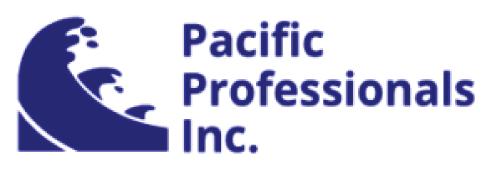
KERN COUNTY: Situated in a growing community located ~1 hour North of LA with a strong agricultural, oil & general broad economic base including a new Amazon fulfillment center. There are many nearby amenities & affordable housing. This general Small Animal practice offers an ~3,000 sq. ft. facility with 3 exam rooms, 60+ cages and 10 runs. Equipment includes ultrasound & digital X-RAY. 2021 projected gross ~$1,245,000. Potential to significantly increase hours of operation to grow productivity. P PRACTICE PRICE: $667, 000. REAL ESTATE PRICE: $425,000
VENTURA COUNTY: Located in a great upscale community with excellent amenities, desirable demographics & highly rated schools. Family-friendly community. Attractive & modern, ~1,800 sq. ft leased facility is strategically located in popular shopping center. Equipment includes Abaxis Lab & Digital X-Ray. Underutilized PX /limited DVM hours. 2020 Gross: $467,000. PX is offered at less than a start-up PRACTICE PRICE ONLY: $200, 000




